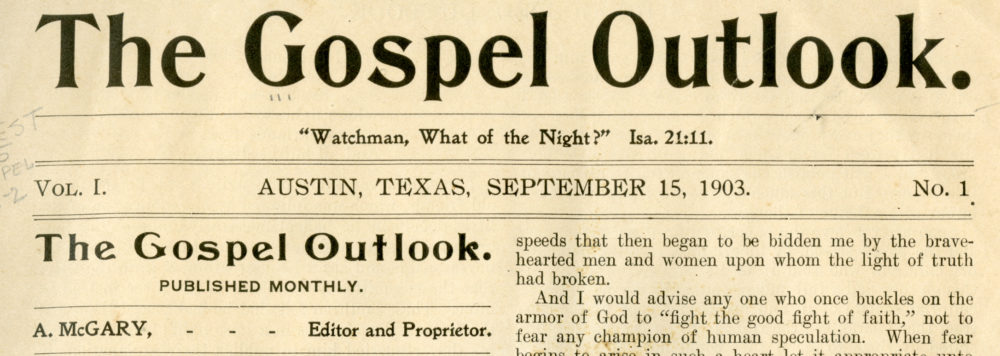Thus Saith the Lord: Thomas Campbell’s Declaration and Address
Introduction
Long recognized as the cornerstone document for the work of Alexander Campbell and the Restoration Movement, Thomas Campbell’s Declaration and Address (hereafter D&A) in its first printing is one of the rarest such literary productions in all of American Christianity. Though the movement it spawned is now a global Christian force, the booklet itself was birthed in sectarian strife, published in a small press run, derided by many of its first readers, and was largely unavailable to any readers for fifty years hence. In time it became one of the most widely heralded documents of the Restoration Movement.
In it Thomas Campbell argued extensively and passionately for a close reading of the Bible, especially the New Testament, and upon that basis urged all Christians to unite in imitation of the earliest church. The unity which would become manifest when extrabiblical doctrines were cast aside, Campbell argued, would facilitate missionary activity, many good works, and a reformation of life and character among Christians. It was, and is, an earnest appeal to Christians everywhere to examine their faith, practice, and life against the standard of the New Testament, to enjoy the community of faith, and to teach and evangelize.
Exhibited here is an exceptionally scarce first printing from 1809 along with specimens from the literature of the Restoration Movement about this foundational document.
Declaration and Address of the Christian Association of Washington. [Thomas Campbell] Brown & Sample, at the Office of the Reporter: Washington, Pa. 1809
56 pages, sewn pamphlet. Tracts and pamphlets such as these were often issued without a cover or with blank paper wraps. Sometimes a cover page, on plain or colored paper, was added. Apparently, the D&A was issued without a cover or wraps. This copy collates as textually complete, well-printed on cotton/linen rag paper which survives in good condition.
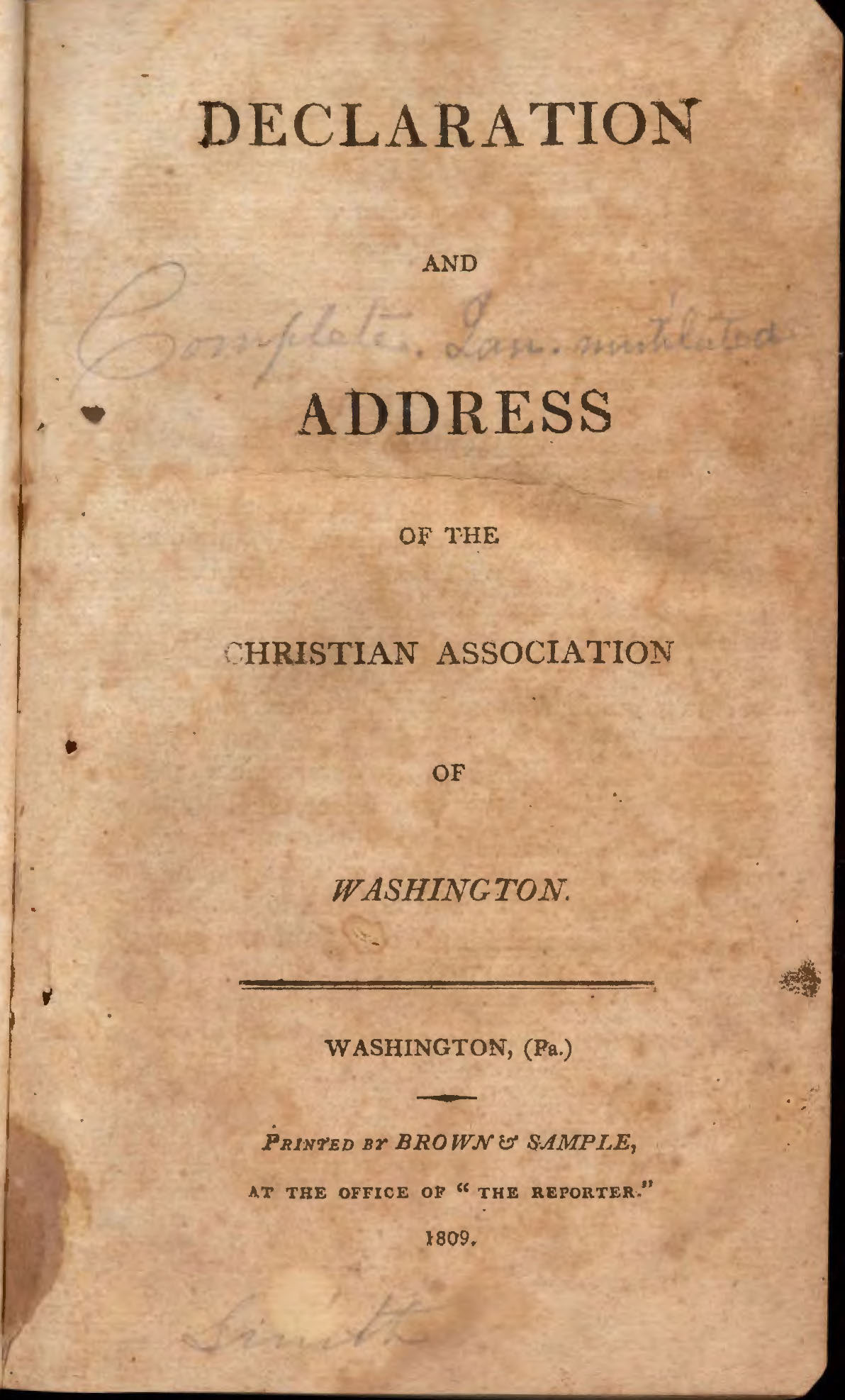
This example survives because C. A. Smith bound it with his earliest issues of Alexander Campbell’s Millennial Harbinger. Readers commonly preserved periodical issues in this way to preserve them for future use—Smith’s marginalia and underlining indicate he attentively studied it. This volume is one of probably at least forty matching volumes of Smith’s set of the Harbinger.
Thomas Campbell read the substance of the D&A in a regular meeting of the Association on September 7, 1809. They immediately requested he publish it, but it came off the press in late December 1809. Presumably they printed sufficient copies for each member, however there is no surviving documentation of the extent of the press run, only a note in the preface that paper shortages delayed publication. The Christian Association had perhaps a few dozen members. In 1809 the town of Washington itself was a village of only 500 souls. Like so many tracts of the time, it was produced out of a moment, for the moment. While the movement the D&A ignited steadily made headway, the document itself was not widely known apparently because it was not widely accessible.
The D&A consists of three parts: the brief Declaration describes the establishment and aims of the Christian Association; the extensive Address “to all that love our Lord Jesus Christ in sincerity, throughout all the Churches” establishes the basis upon which all believers may enjoy their unity in Christ. It contains thirteen propositions “designed for opening up the way, that we may come fairly and firmly to original ground upon clear and certain premises, and take up things just as the Apostles left them, that, thus disentangled from the accruing embarrassments of intervening ages, we may stand with evidence upon the same ground on which the Church stood at the beginning.” Finally, in the Appendix Campbell anticipates objections to his proposals and in a Postscript he announces immediate next steps that the Association should take.
How, then, did a document which was so obscure even when it was first published ignite what has become a global movement? The short answer has long been one of the great stories of Restoration lore. Thomas Campbell emigrated from Ireland to America in 1807, with plans for his family to join him soon thereafter. After a long unplanned delay and stopover in Glasgow, they arrived in America in late September 1809 and reunited with Thomas in early October. During the months they were apart, all felt the brunt of the divisions among Presbyterians: Thomas in Pennsylvania and Alexander in Glasgow. When they reunited and Thomas showed him the galley proofs of the D&A, Alexander resolved to enter the ministry to devote the remainder of his life to the principles his father articulated.
The copy displayed here is one of only six extant. The one held in the Campbell Family Papers at Bethany College could be the galley proof which Alexander Campbell read upon his arrival in Pennsylvania in October 1809. Other copies are held by American Antiquarian Society (Worcester, MA), Presbyterian Historical Society (Philadelphia), Reformed Presbyterian Seminary (Pittsburgh), and the University of Toronto. One copy was held at Overdale College, Birmingham, England, in the mid-twentieth century but has since been lost.
ACU Special Collections acquired this copy from the David Earl and Katherine Neely Burford family (Brownsville, TN), August 18, 2021. Its provenance begins with a C. A. Smith sometime in the middle or end of the 19th century. The Burford family believes the publication was inherited from his parents, Guy Vernon Burford and Fanny Cooke Burford (also of Brownsville), but is unaware of the origin and date of acquisition. It was then inherited by their daughter, Dana Burford Williams, and her husband, Jack Thomas Williams (Brownsville, TN), July 22, 2002. It was then Inherited by their sons, Bradley Burford Williams (Nashville, TN) and Wesley Lyle Williams (Bartlett, TN), February 14, 2021.
The family wishes to thank Abilene Christian University, the Margarett and Herman Brown Library and its staff for their interest in preserving and sharing this rare, historical publication from the Stone-Campbell Restoration Movement of the early 19th century.
“Oh that my words were now written! Oh that they were printed in a book!” Job 19:23
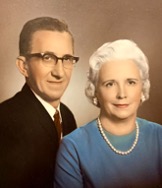
David and Katherine Burford

Jack and Dana Williams
Memoirs of Elder Thomas Campbell, together with a
brief memoir of Mrs. Jane Campbell. Alexander Campbell. H. S. Bosworth: Cincinnati, 1861
Alexander Campbell writes in the preface, “…whatever good, little or much, I may have achieved under God, I owe it all, and those benefited by it owe it all, to his paternal care and instruction, and especially to his example.”
“I never knew a man in all my acquaintance with men,” he wrote, “of whom it could have been said with more assurance that ‘he walked with God.’ Such was the tenor of his path, not for a few years, but a period as far back as my memory reaches.”
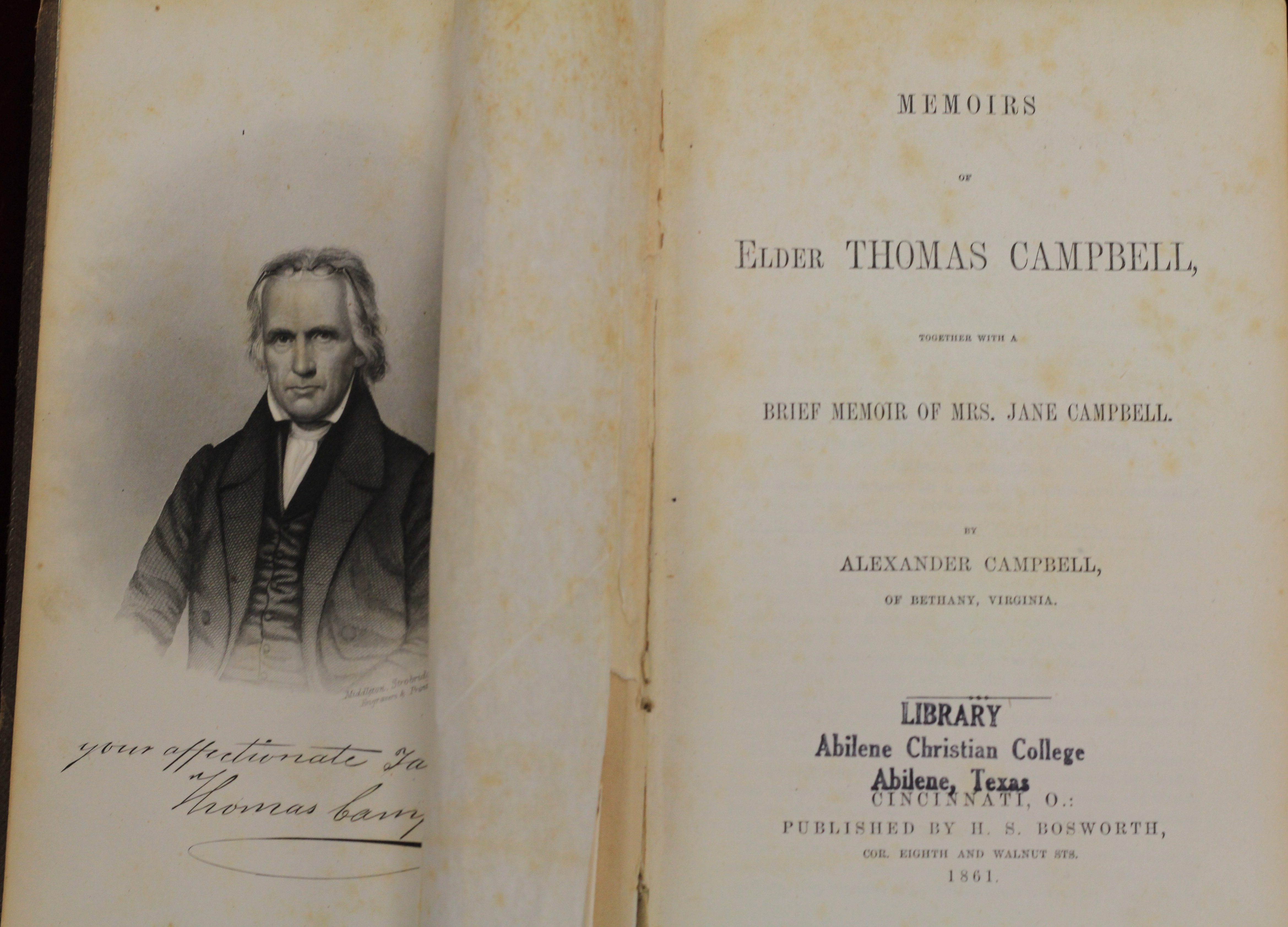
Historians agree that while Alexander eclipsed his father in terms of public notoriety, Thomas’ teaching, guidance, counsel, and example were foundational and enduringly formative influences on his son.
Thomas and Alexander Campbell. Archibald McLean. Fleming H. Revell: New York, 1909.
After Alexander Campbell’s 1861 Memoirs, McLean’s slim volume was the first, albeit brief, stand-alone biography of Thomas Campbell. It was one of several historical works produced to coincide with the great centennial celebration of 1909. The republication of the D&A marked a renaissance of memory and prepared the way for critical Restoration historiography and biography. “Thomas Campbell has been overshadowed,” McLean writes, “and his work largely forgotten. The truth of history requires that Thomas Campbell should have the honor that is his due.”
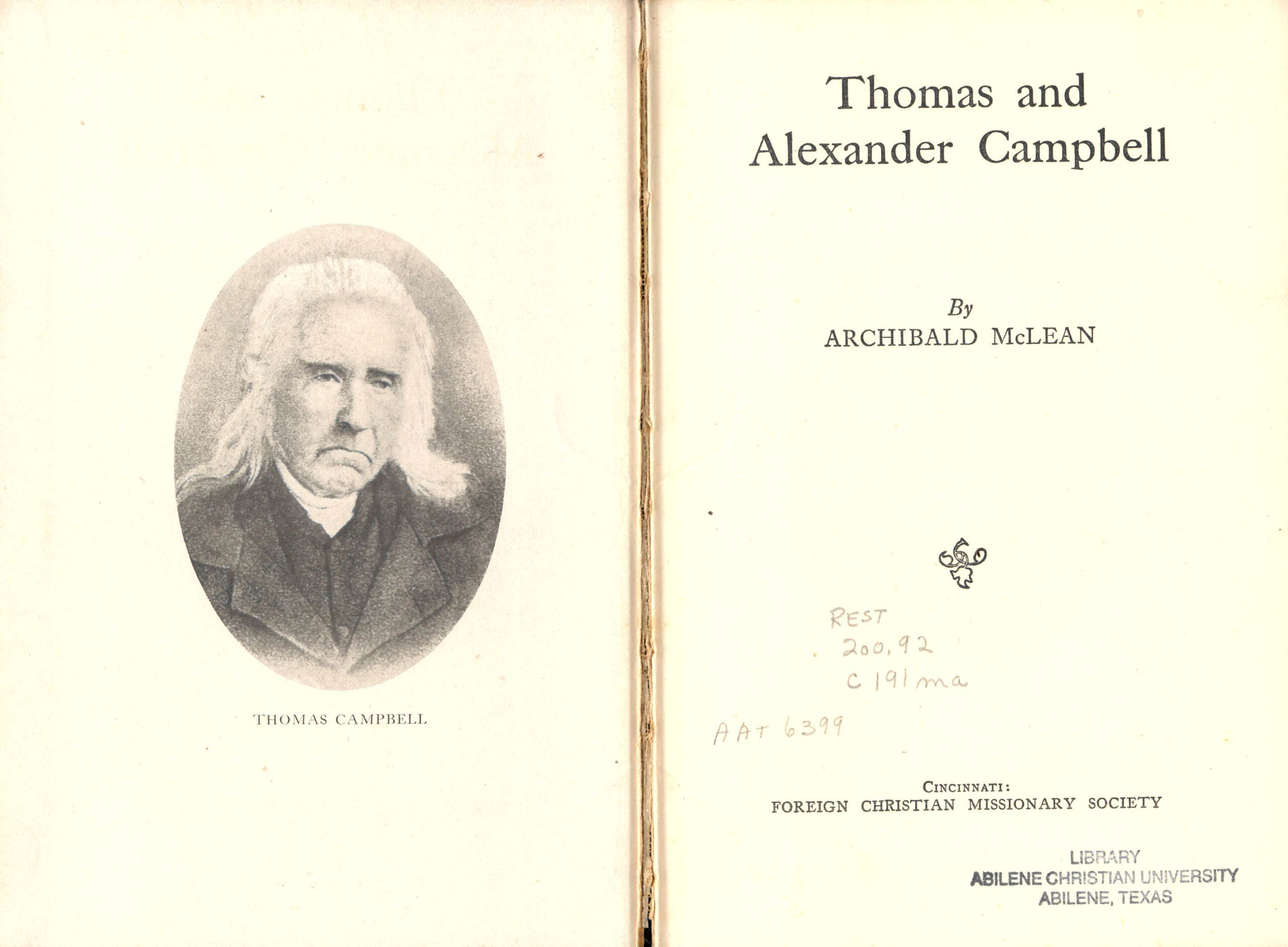
Thomas Campbell, Seceder and Christian Unity Advocate. William Herbert Hanna. Standard Publishing Company: Cincinnati, 1935.
Hanna’s book properly marks the beginning of modern critical study of Campbell’s life and work. Hanna utilized two sets of handwritten and unpublished records, the Minutes of Chartiers Presbytery and Minutes of Associate Synod of North America to set him within his Presbyterian context. “Such records,” Hanna states, “help to give the background of the period, and Thomas Campbell was in the midst of it all.”
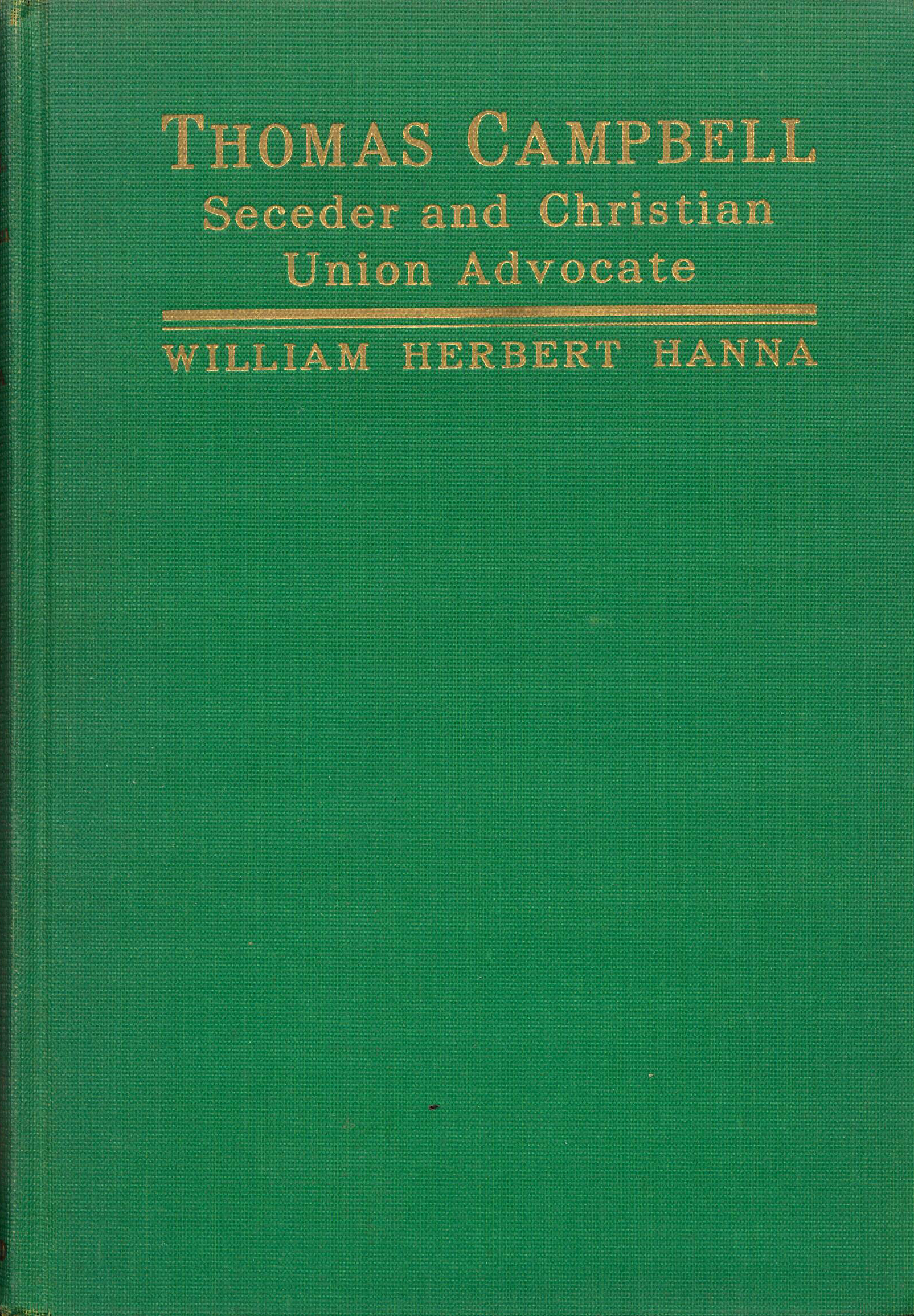
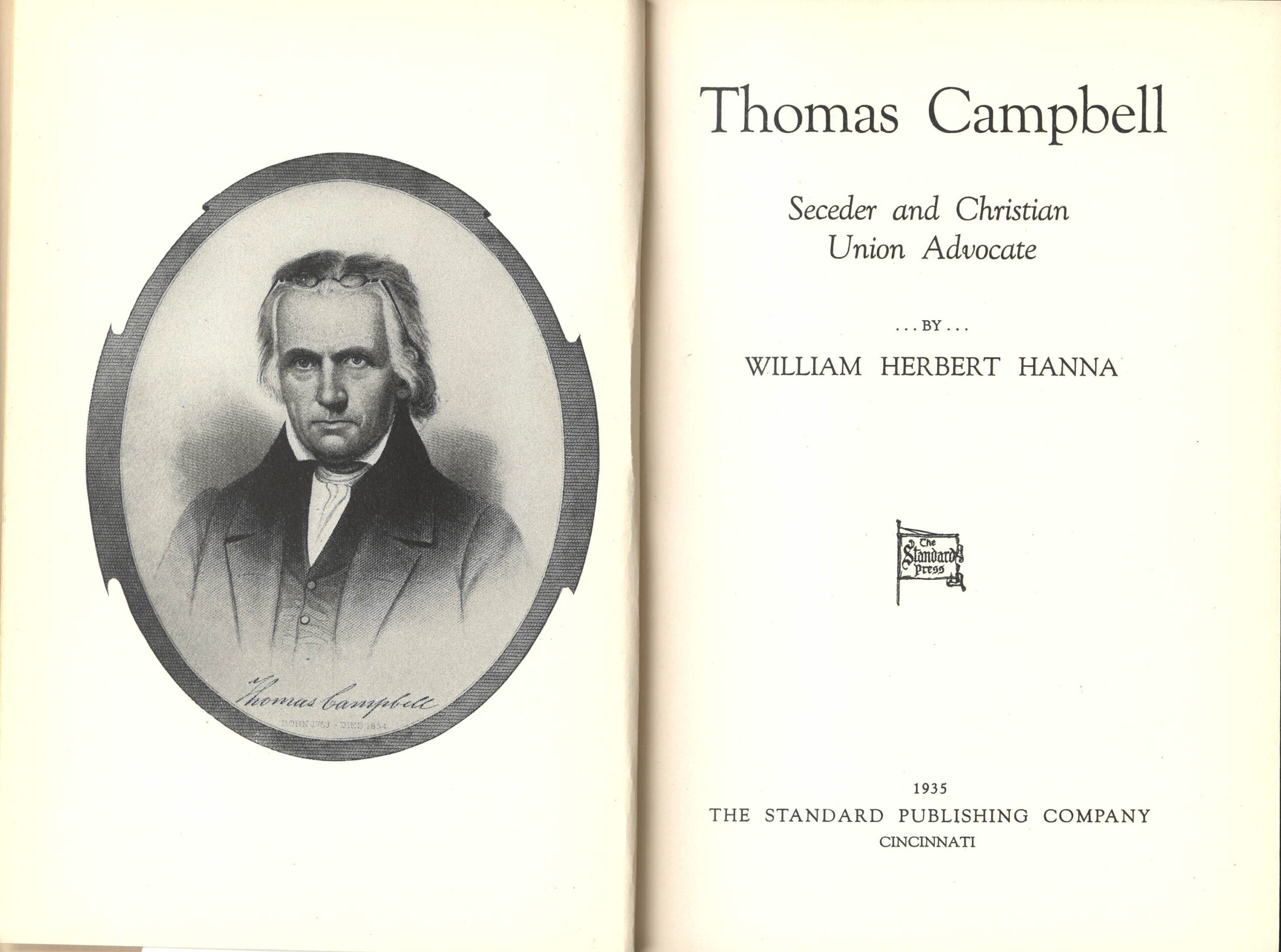
Thomas Campbell, Man of the Book. Lester G. McAllister. Bethany Press: St. Louis, 1954.
Lester McAllister was a leading Disciples historian of his generation who set about “to read every book or document written by or containing a reference to Thomas Campbell, to collect every known fact, and to seek the essence of that which represents the truth about Thomas Campbell.” Unsurprisingly then, McAllister for the first time explores Campbell’s early life and ministry and includes many details earlier biographies lack.
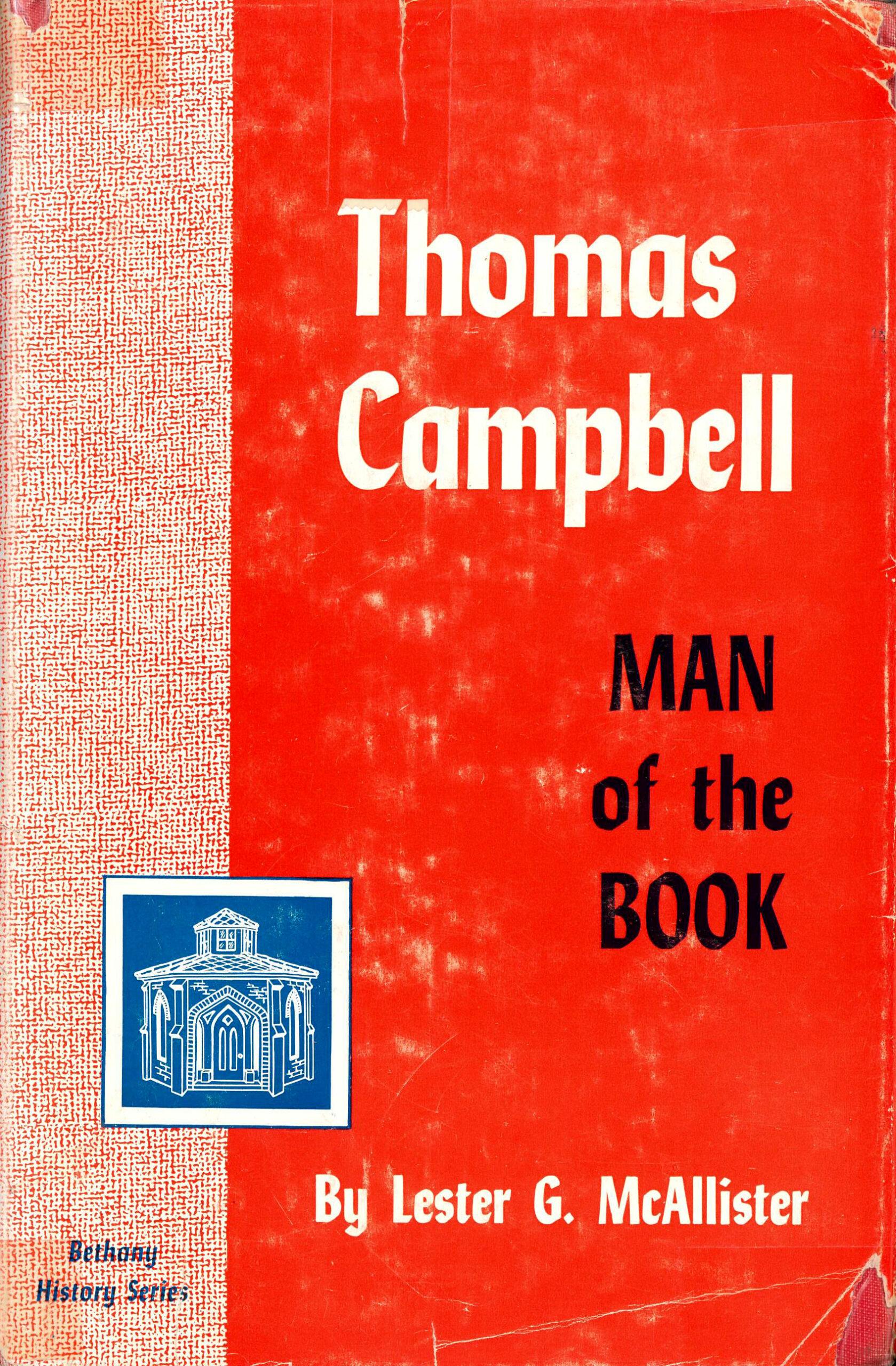
Among the Early Evangelicals: The Transatlantic Origins of the Stone-Campbell Movement. James L. Gorman. Abilene Christian University Press: Abilene, 2017.
In the seventy years since McAllister no monographic biography of Thomas Campbell’s life has appeared, though the D&A has remained a subject of study. The most recent thematic study is James Gorman’s examination of the transatlantic context of the founding of the Christian Association of Washington. He demonstrates how it was modeled after voluntary missionary organizations such as the London Missionary Society, and that as such it was an outward-focused group desirous of mutual cooperation in preaching, teaching, evangelism and missions.
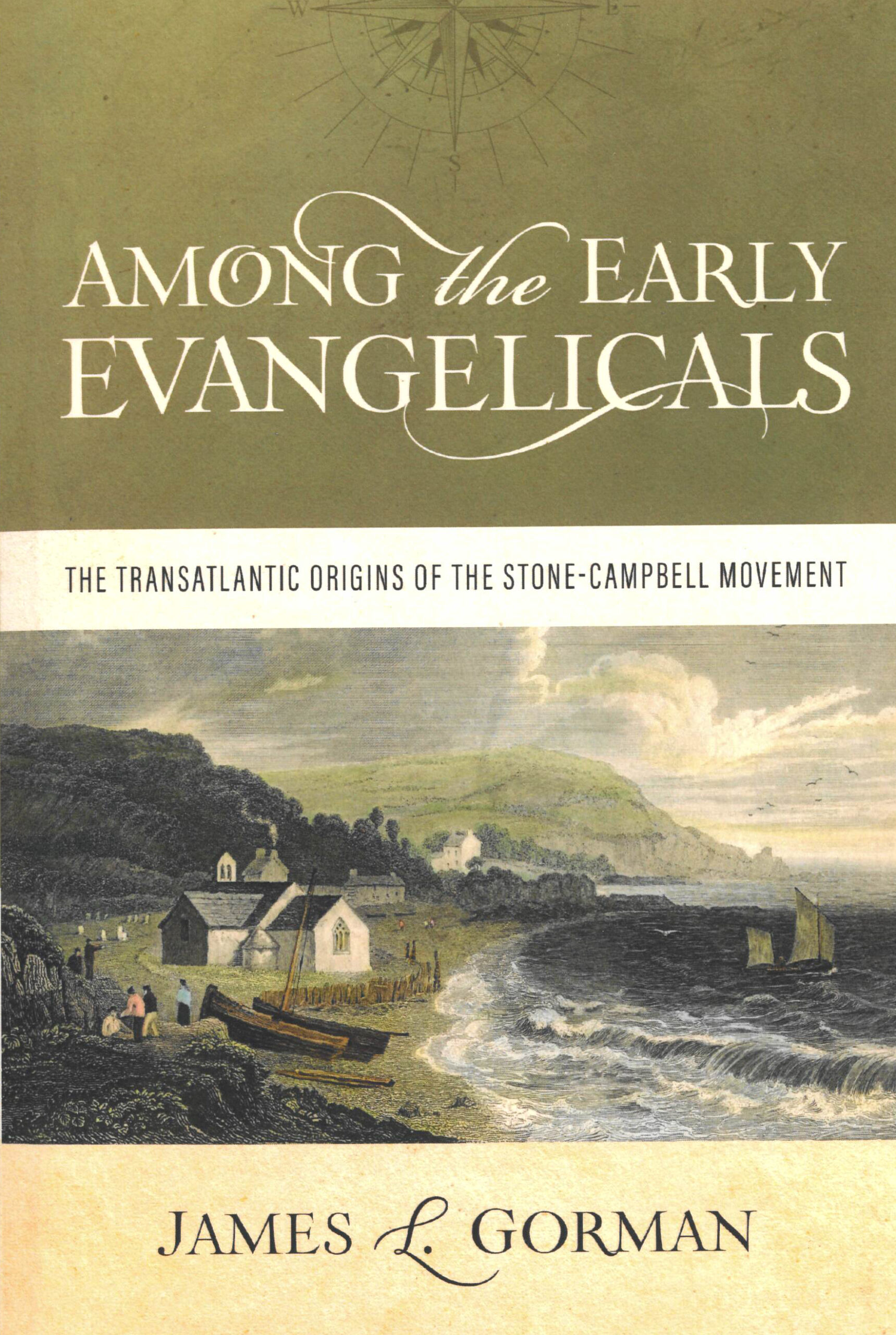
Historical Documents Advocating Christian Union. Charles Alexander Young. Christian Century Company: Chicago, 1904.
As the heirs of the Restoration Movement looked toward 1909—the centennial anniversary of the D&A—they published two anthologies. The Disciples-affiliated Young, and F. L. Rowe, a publisher serving primarily Churches of Christ, both reflected a latent historical consciousness among their readers and both propelled future historical analysis by providing select source documents to new generations. Young said the D&A “is really the Magna Charta of the Restoration Movement of the Nineteenth Century. It is the greatest document ever written in the advocacy of Christian Union.” Rowe said he polled “twenty-five of our representative brethren—embracing educators, preachers, and the common people, asking for information about matter related to the early work of the pioneers. To my surprise, not more than six of the twenty-five [appeared to acknowledge] any familiarity with the early writings…”
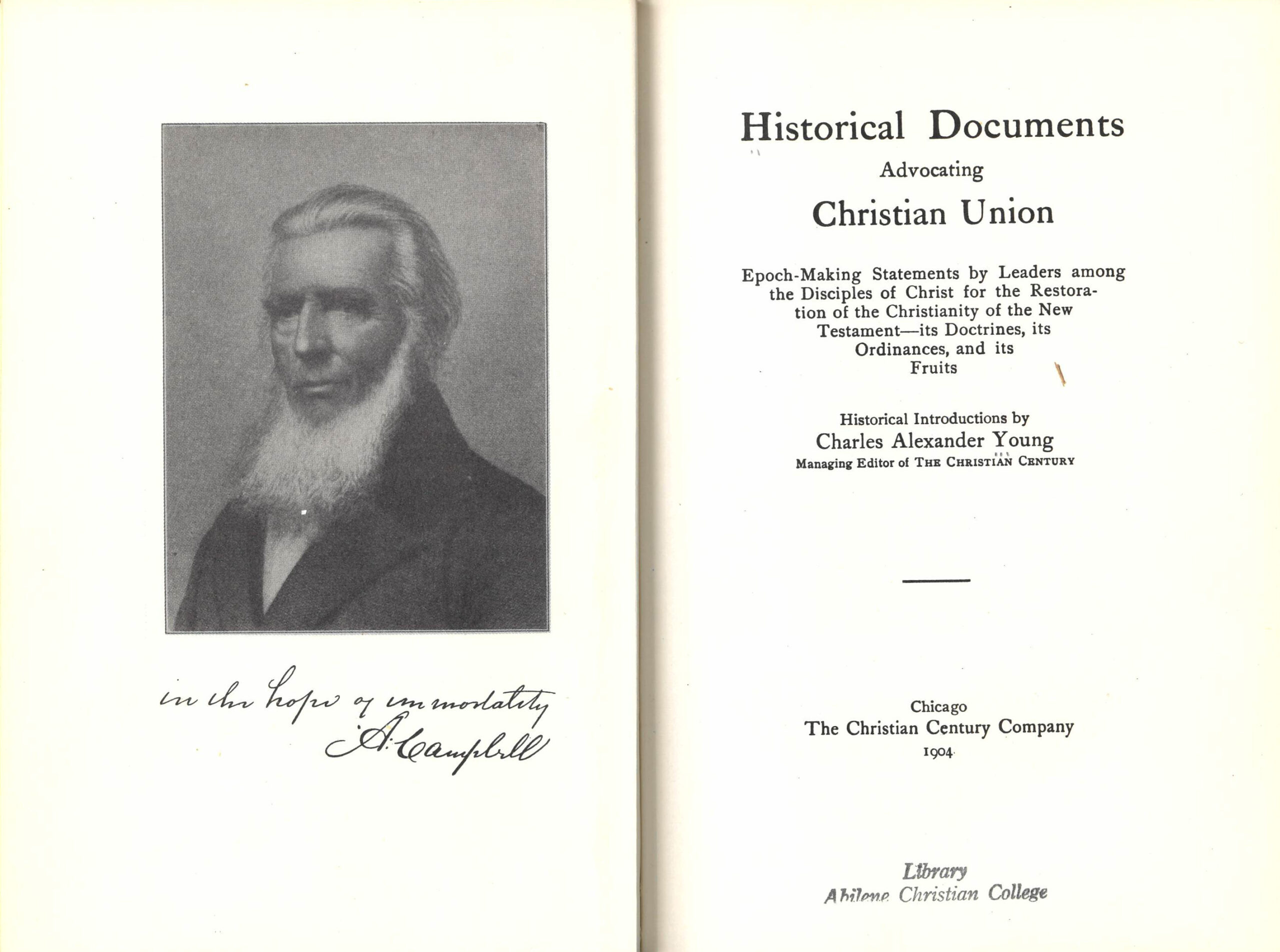
Pioneer Sermons and Addresses. F. L. Rowe: Cincinnati, 1908.
At a basic level this historical consciousness, at least among editors and publishers, continued unabated well into the twentieth century, as a third anthology illustrates. It, too, excerpts the D&A to support editor John Allen’s Hudson’s emphasis on the need to establish Biblical authority for faith and practice. Re-presentations such as Young, Rowe, and Hudson illustrate how 20th century leaders appropriated the past to inform their discussions about current issues. The Young and Rowe books are from Jesse Parker Sewell’s personal library and bear his signature and marginalia.
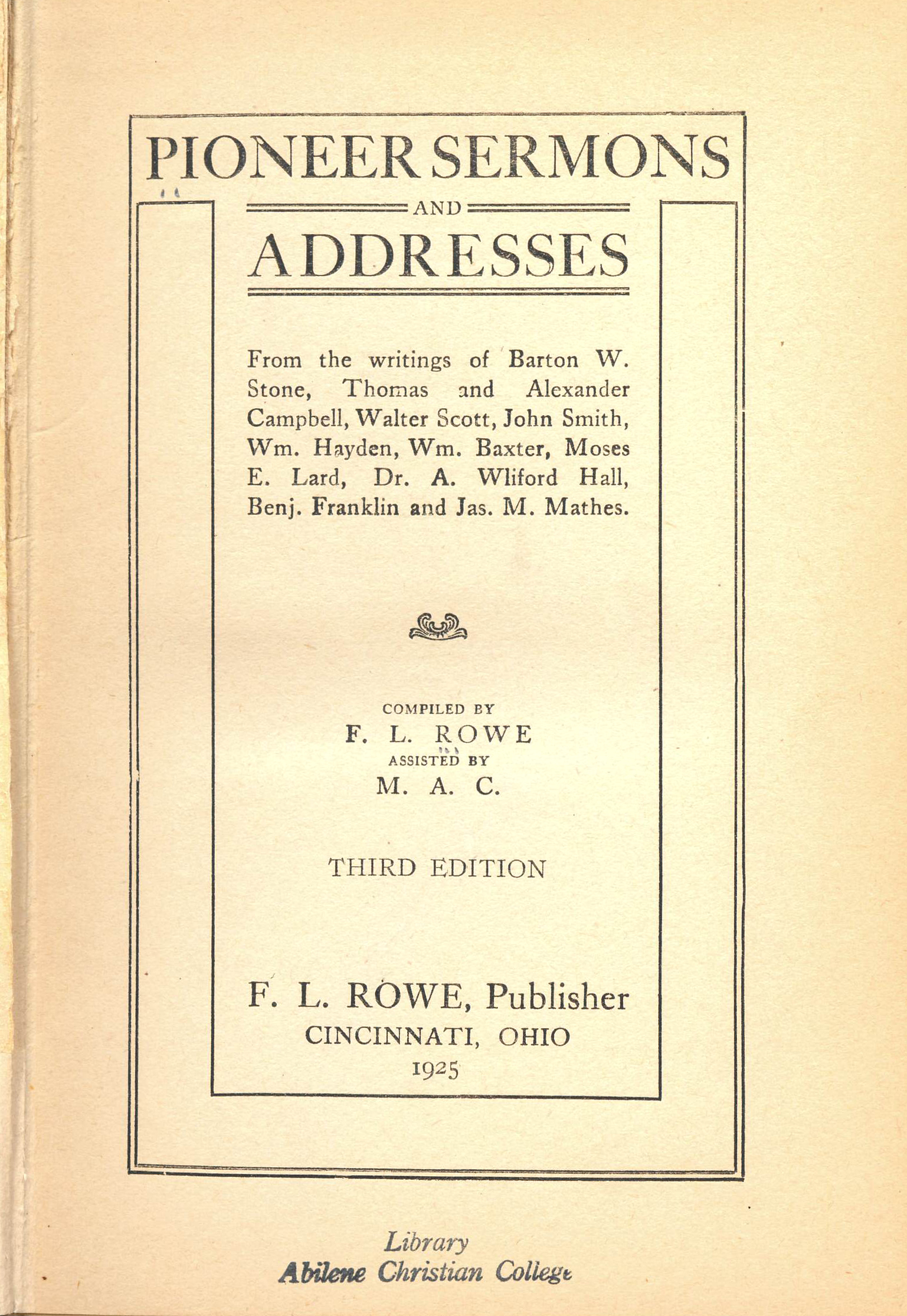
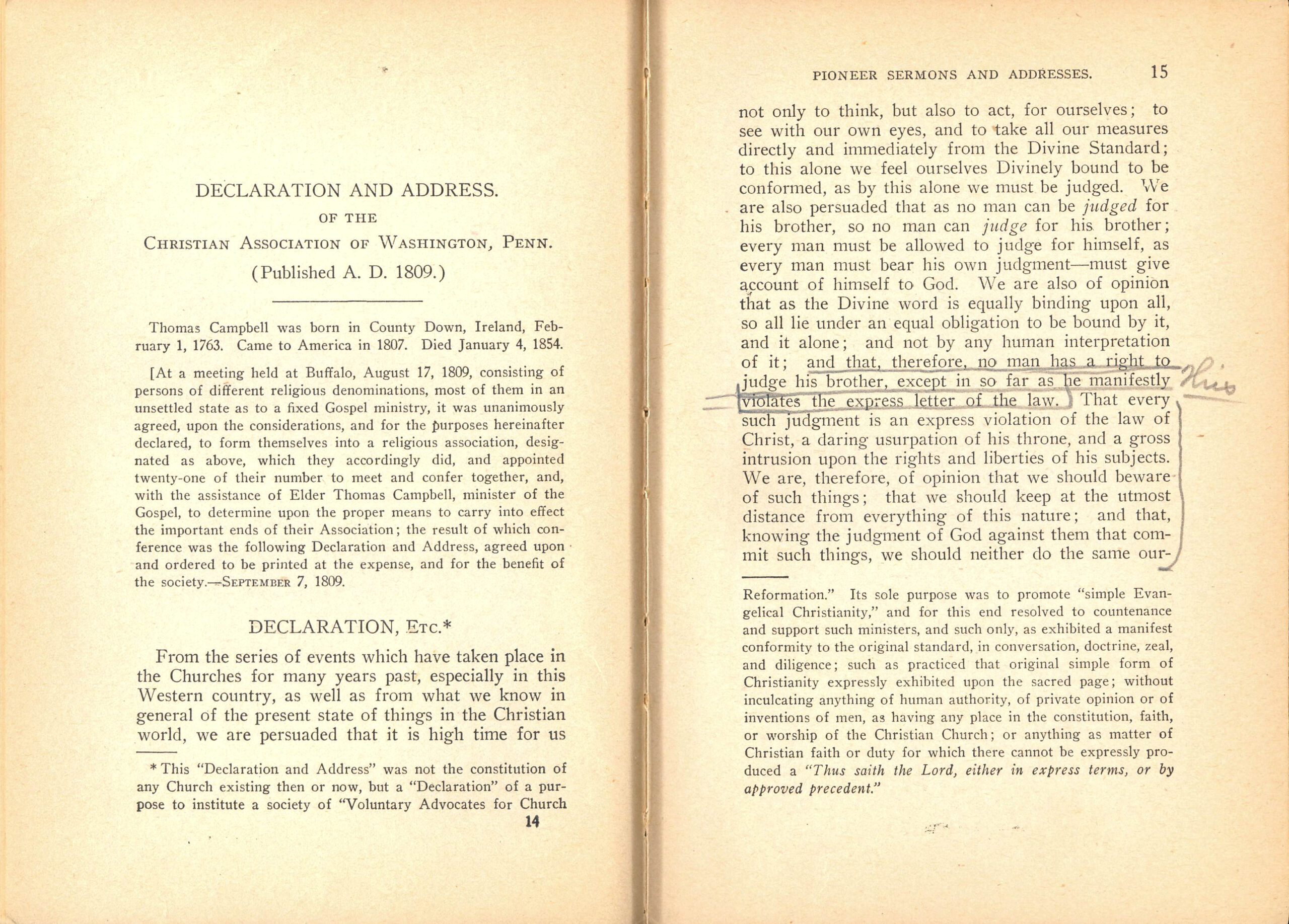
Great Pioneer Papers. John Allen Hudson. Old Paths Book Club: Rosemead, California, 1949.
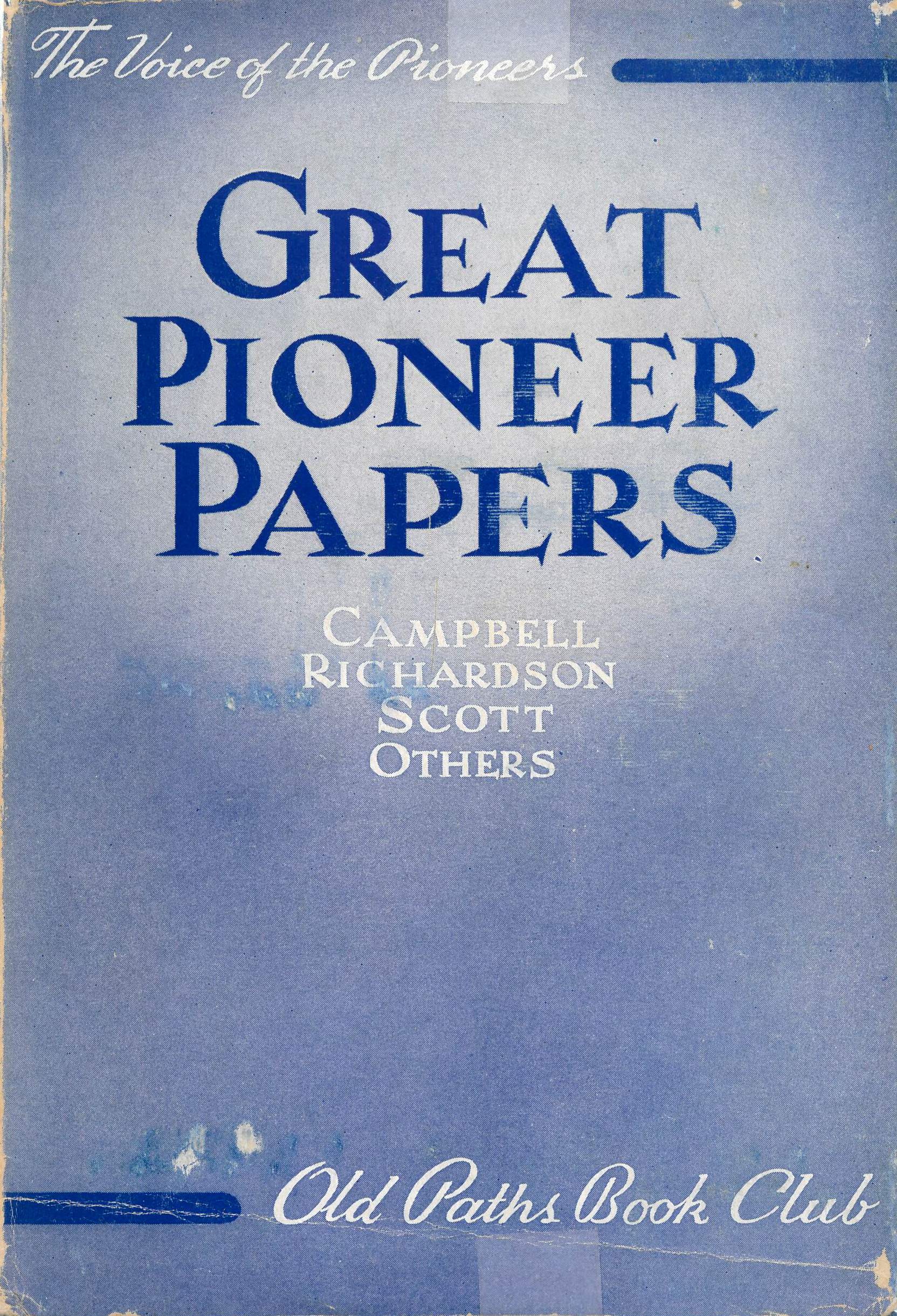
Declaration and Address in selected 20th c. printings:
1908 Limited Deluxe edition, issued by Centennial Committee: Pittsburg, 1908. Leather. #87 of 1000.
This leather-bound limited edition was produced from the (then) only-known surviving copy held by the Campbell family. A prefatory note states, “At the Centennial Convention of the Disciples of Christ the chief exhibit will be the only original copy of the Declaration and Address. It belongs to Mrs. Decima Campbell Barclay, the only surviving daughter of Alexander Campbell and is kept in the vaults of the Mercantile trust Company.” Evidently by the end of 1908 a second original copy was located (see the advertisement from Christian-Evangelist, December 1908). The rich suede cover and antiqued paper gives it such an authentic look that some libraries have mistaken it for the 1809 original printing.
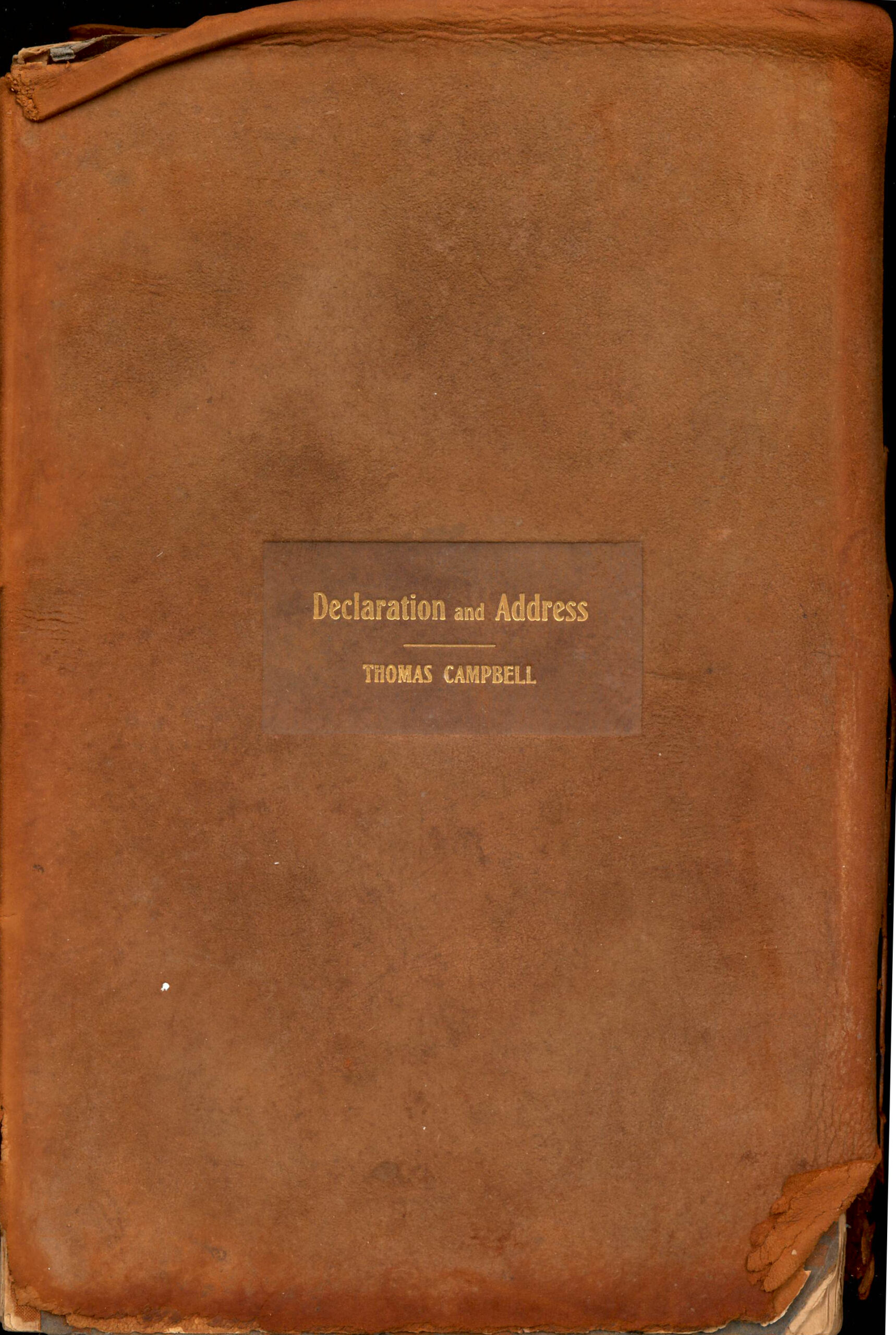
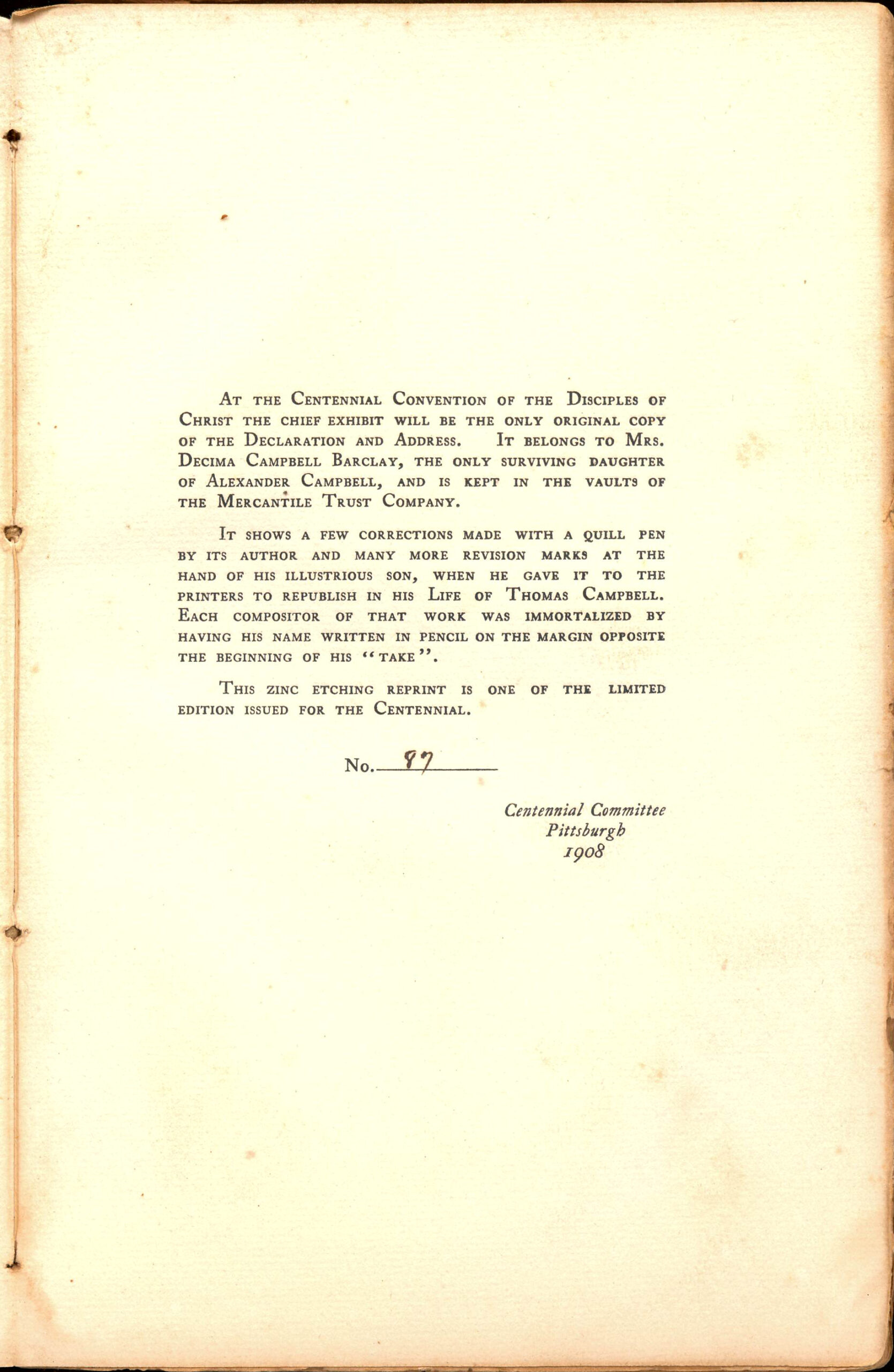
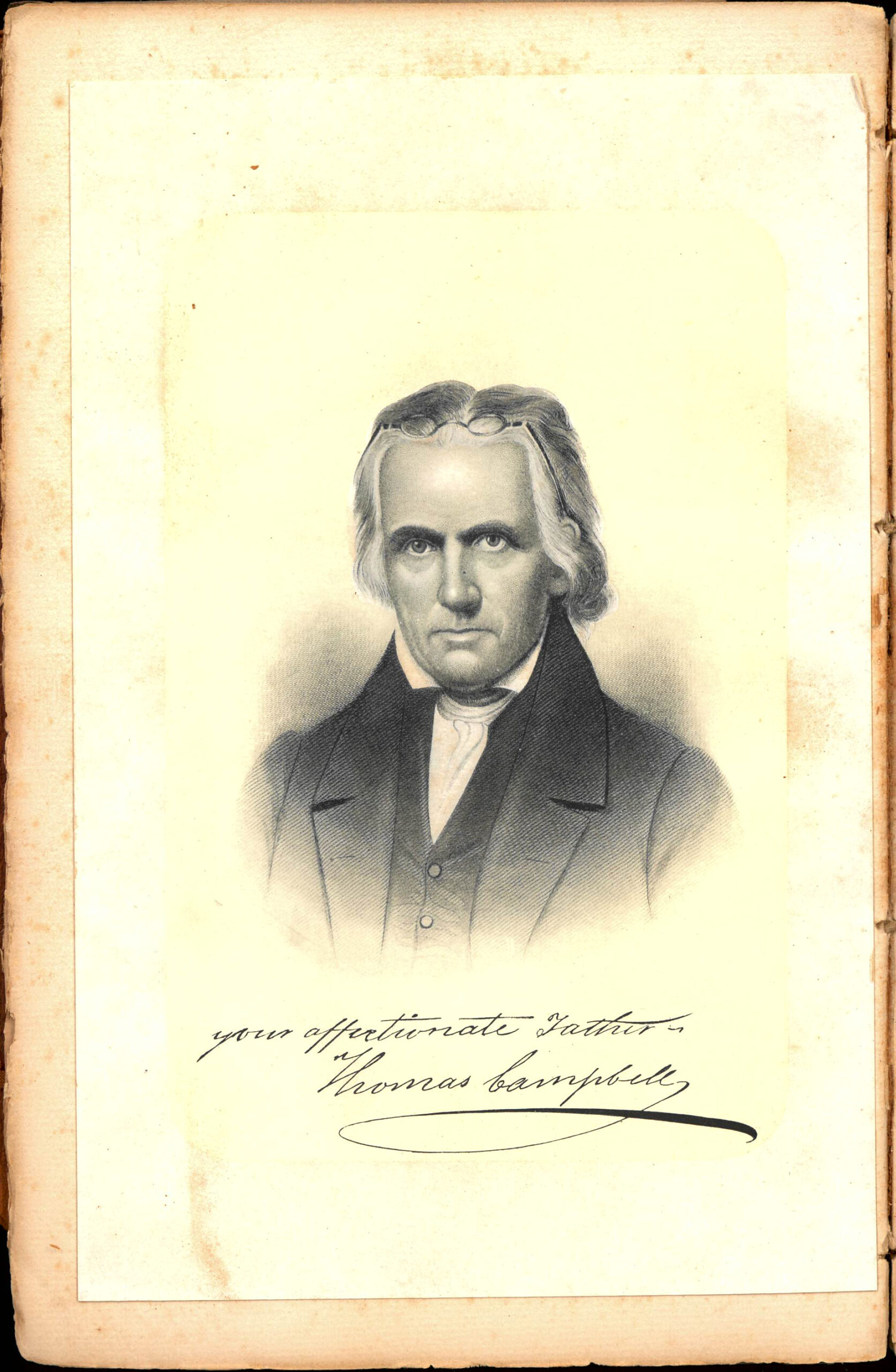
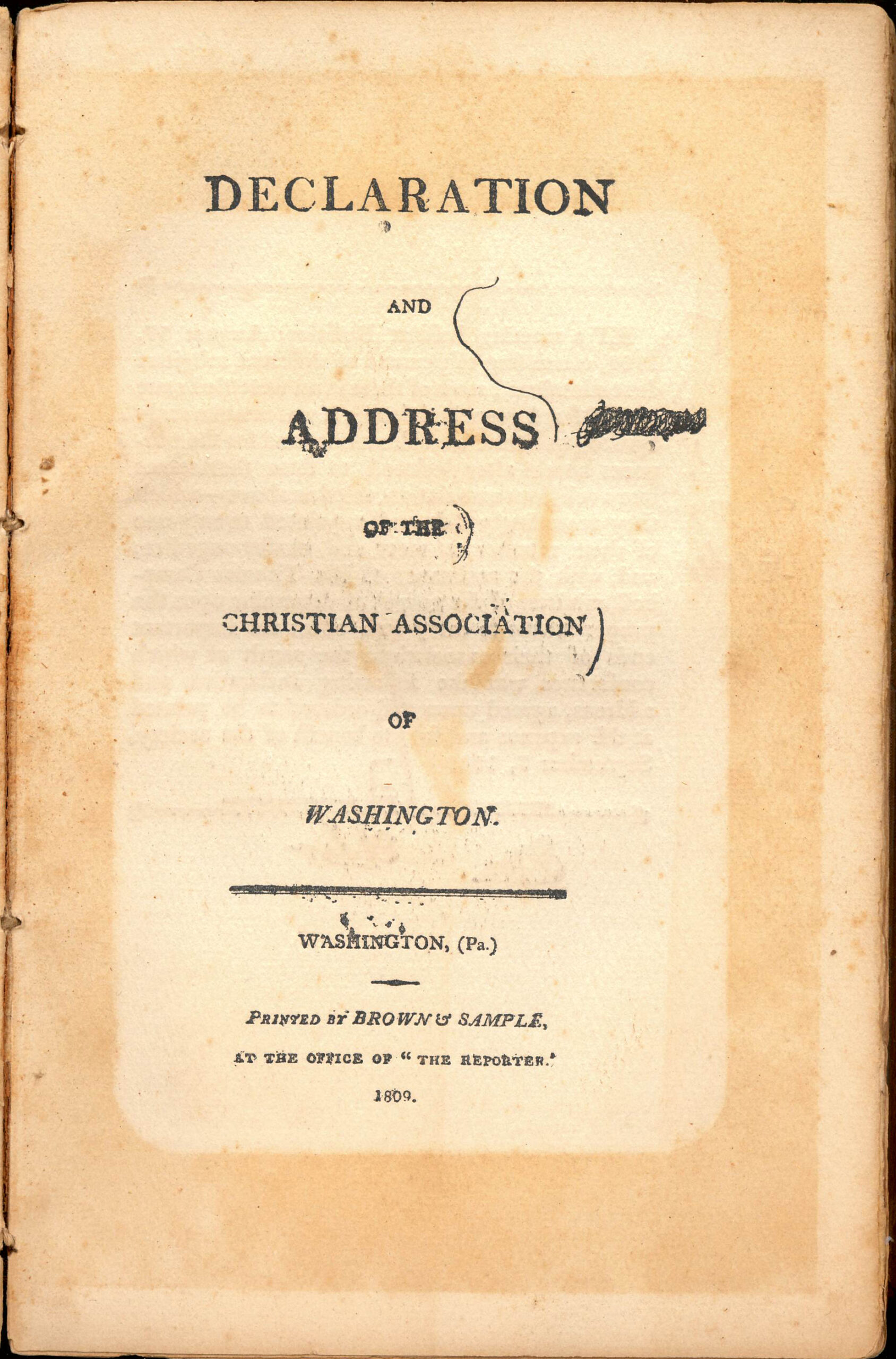
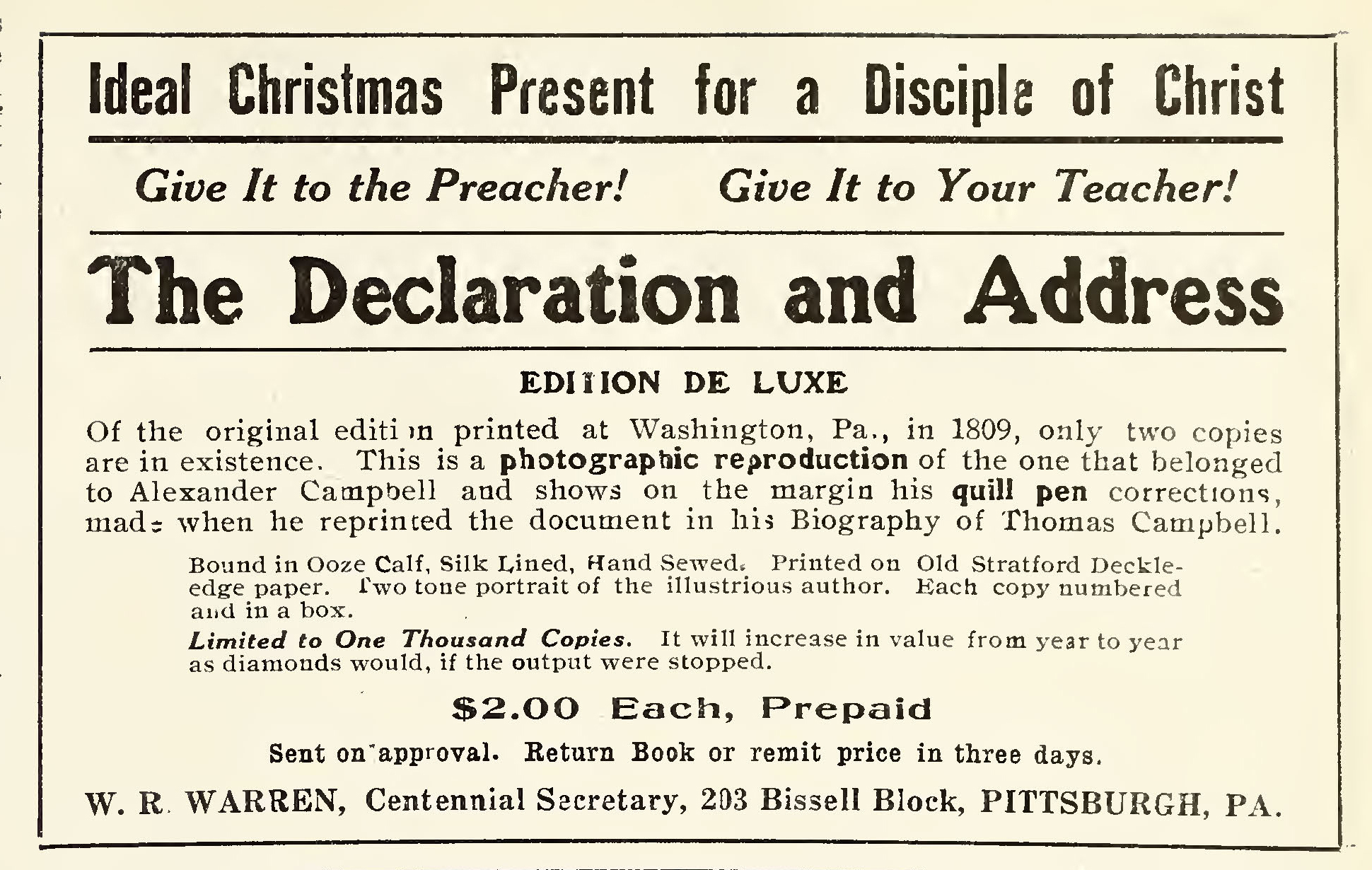
Ad for the Centennial reprint edition. Christian-Evangelist, December 10, 1898, page 1581.
1909 edition, issued by Centennial Bureau: Pittsburg. 30th thousand. Paper cover.
Cheaper printings in paper covers ensured the D&A, as a stand-alone document, was widely available for first time. At least 30,000 copies of this edition were printed.
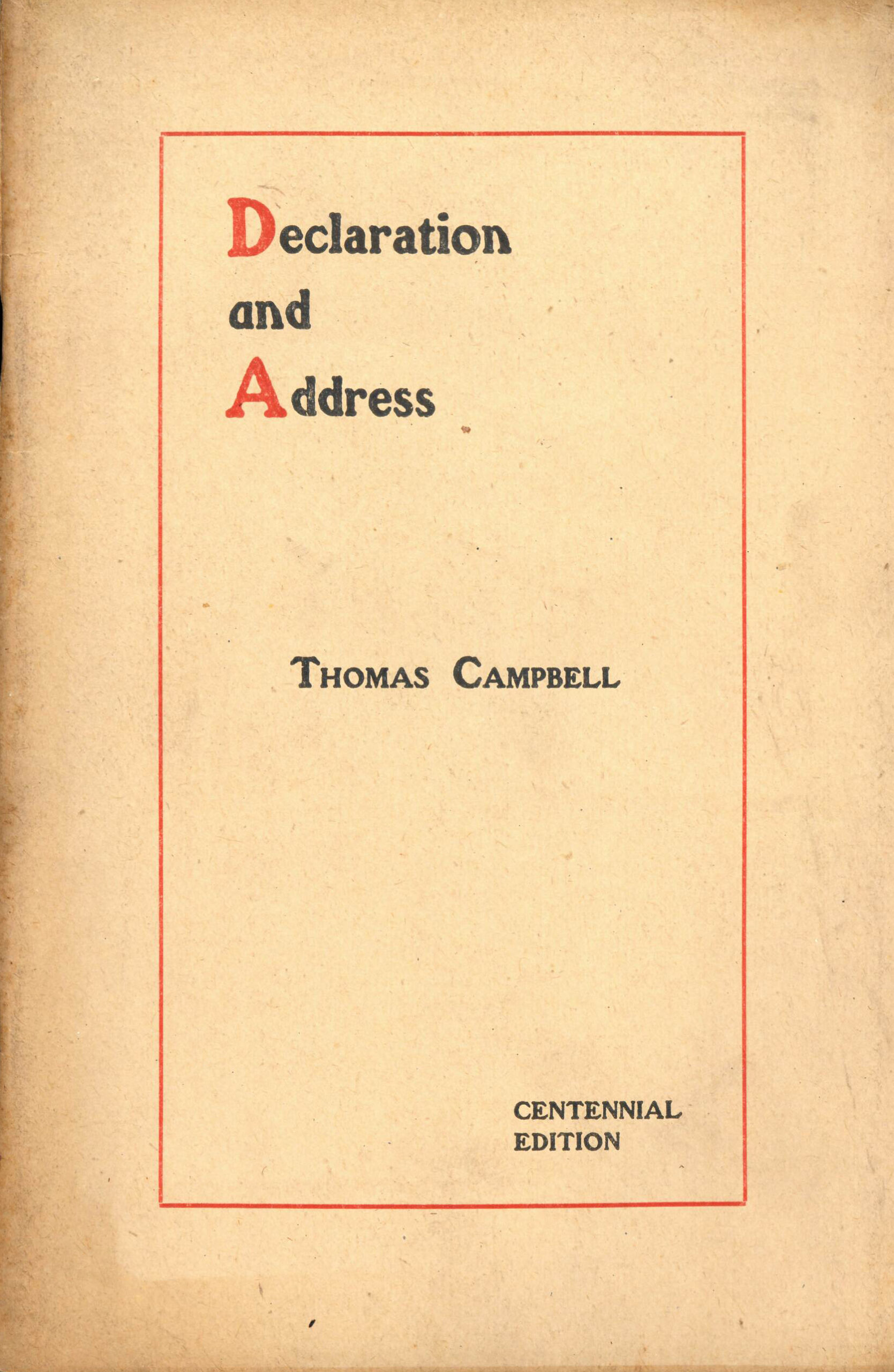
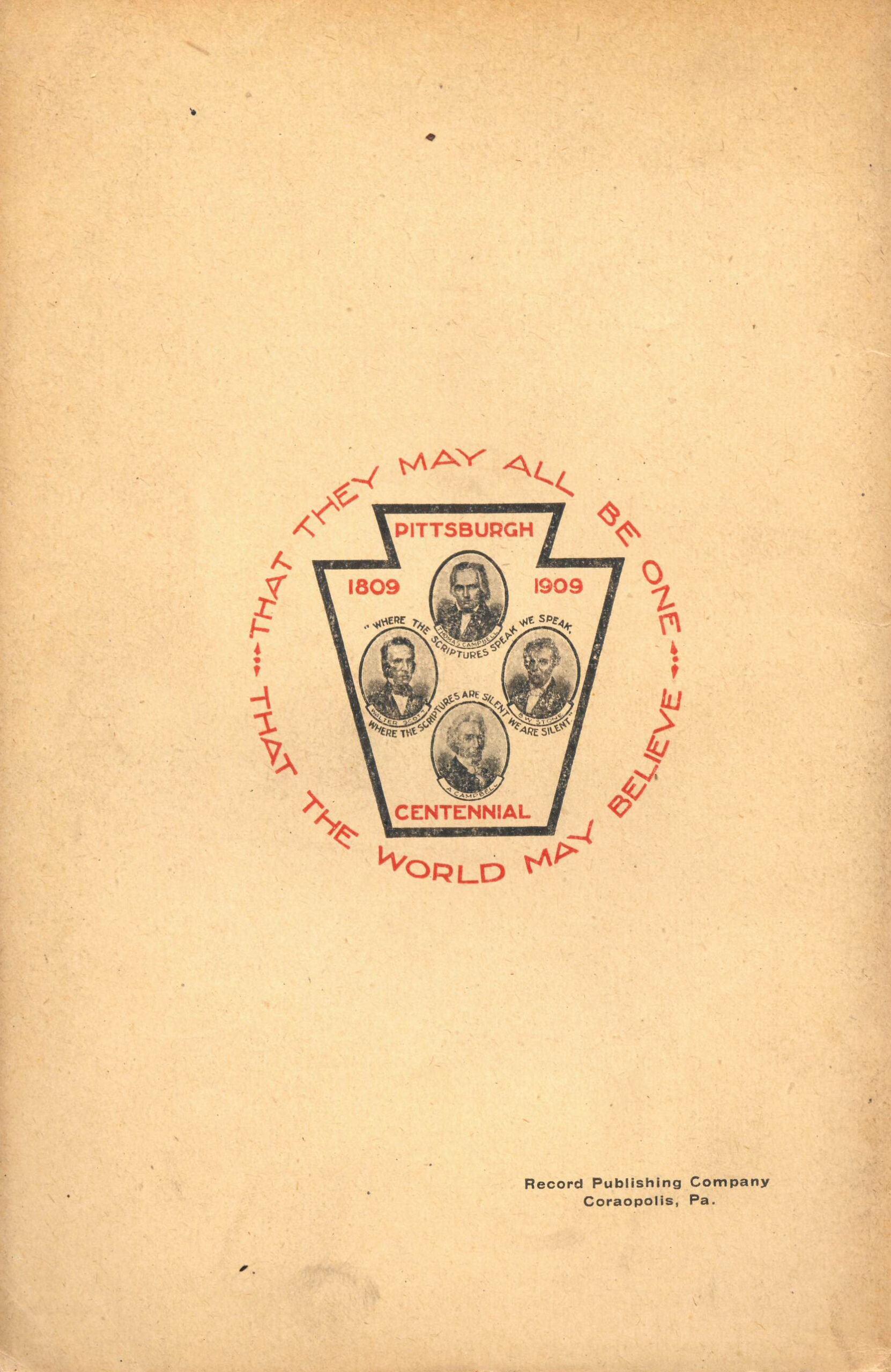
1951 printing by Berean Press, Birmingham, England, with an introduction by William Robinson.
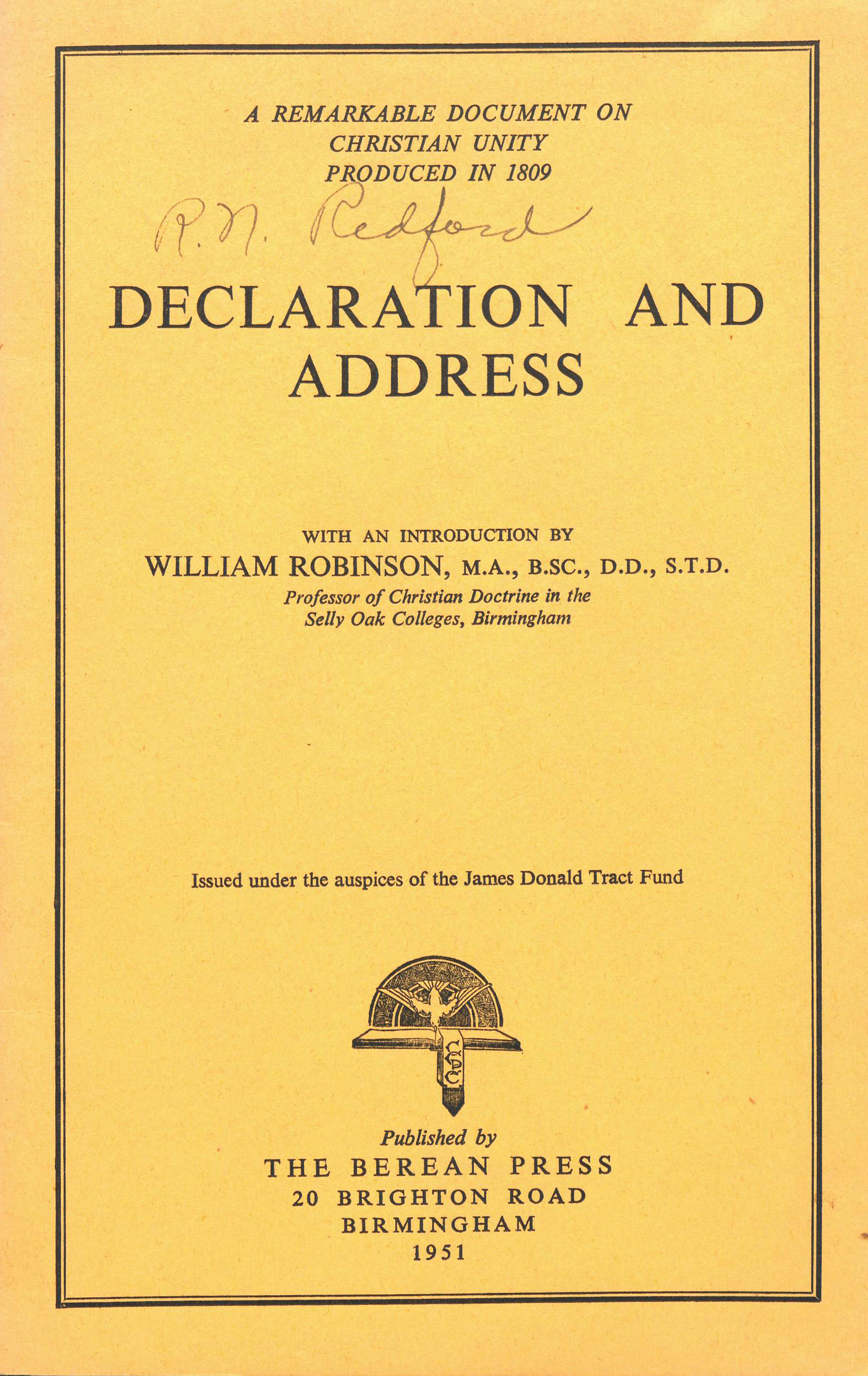
1972 by Mission Messenger: St. Louis, published by Carl Ketcherside with the Last Will and Testament of the Springfield Presbytery, by Barton Stone and others.
The D&A was reissued at least six times from 1951 to 1978 by publishers from across the spectrum within the Restoration Movement. Note the ACU bookstore price sticker on the Ketcherside edition.
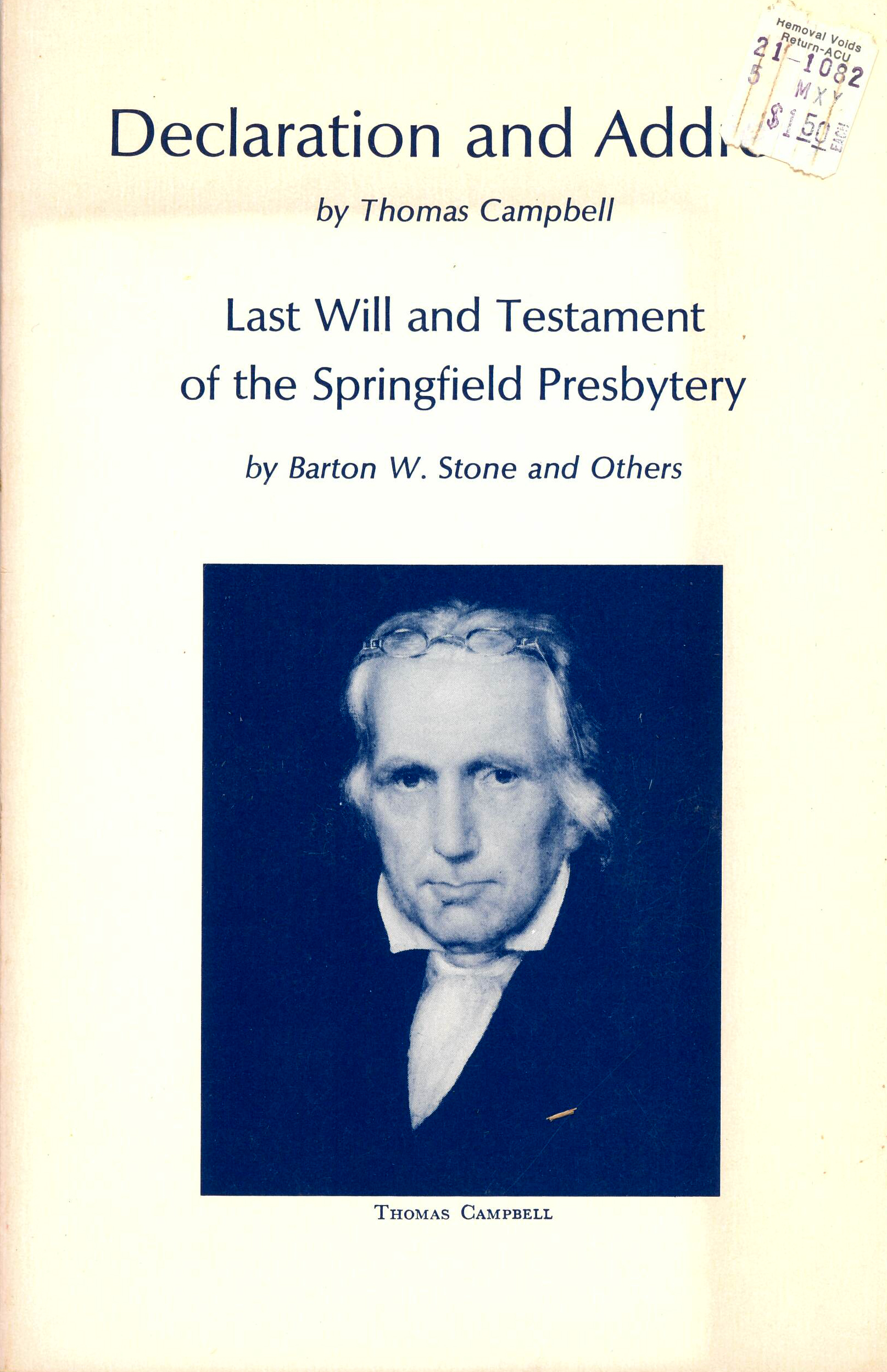
The Centennial Report. Standard Publishing Company: Cincinnati, 1910, and reduced facsimile of poster, 1909.
The Christian Churches which supported missionary societies had for several years gathered on an annual basis to receive society reports and to champion their causes. It was decided to hold the 1909 national convention in Pittsburgh, the largest city nearest to Washington, Pennsylvania. It was, and remains, the largest such convention in Restoration Movement history, drawing some 50,000 attendees for the five-day meeting in October 1909.
This yard-long photograph of the communion service held at Forbes Field (with 26,000 communicants) indicates the vigorous support for the ideals championed by Thomas and Alexander Campbell as embodied by the Christian Churches and Churches of Christ. The Campbell family copy of the D&A formed the heart of the historical exhibits that week. In 1908 only one original copy was known to exist. By 1910, tens of thousands of copies were in circulation to ensure its availability in its second century far exceeded anything the Christian Association could have imagined in September 1809.
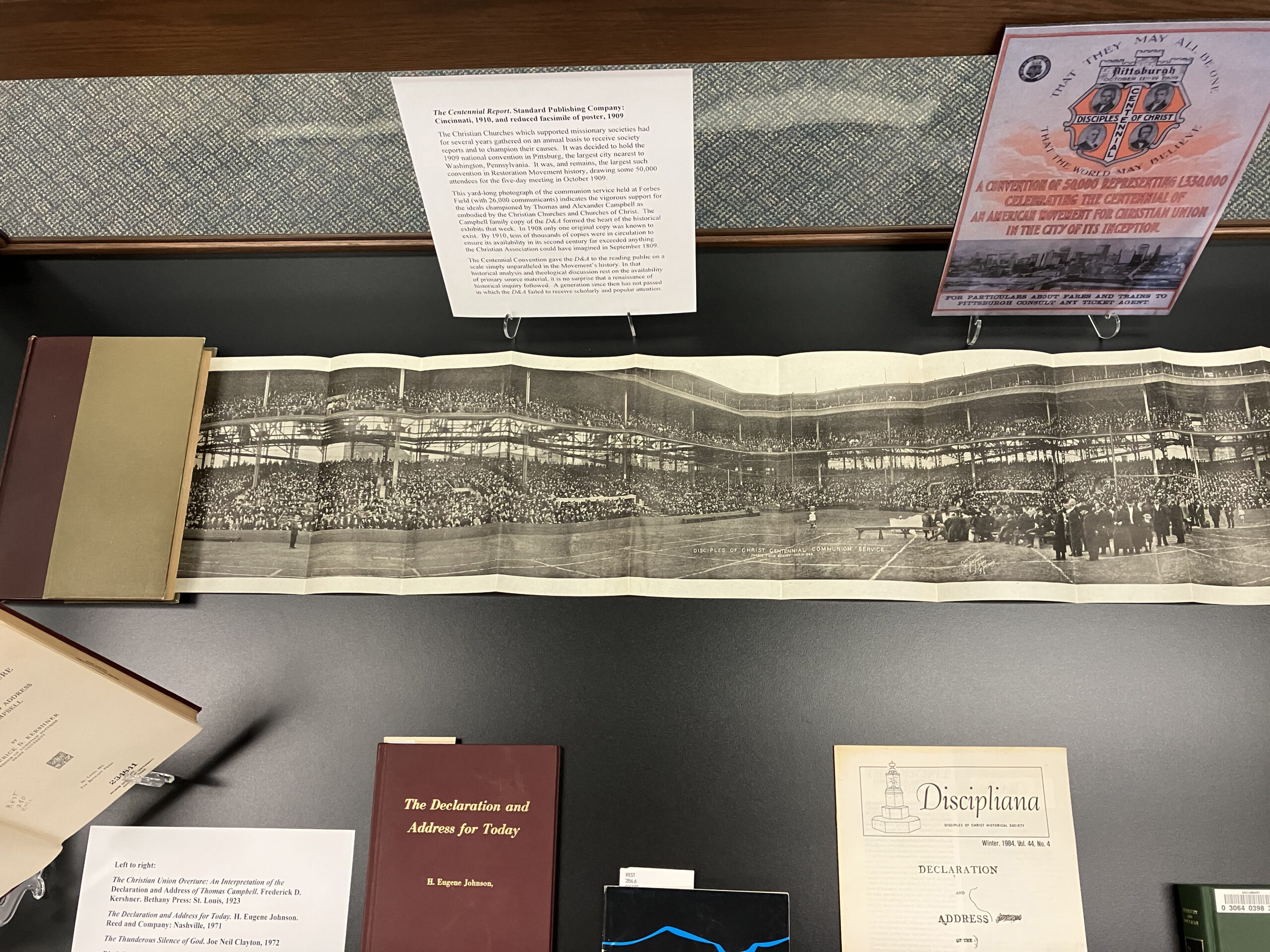
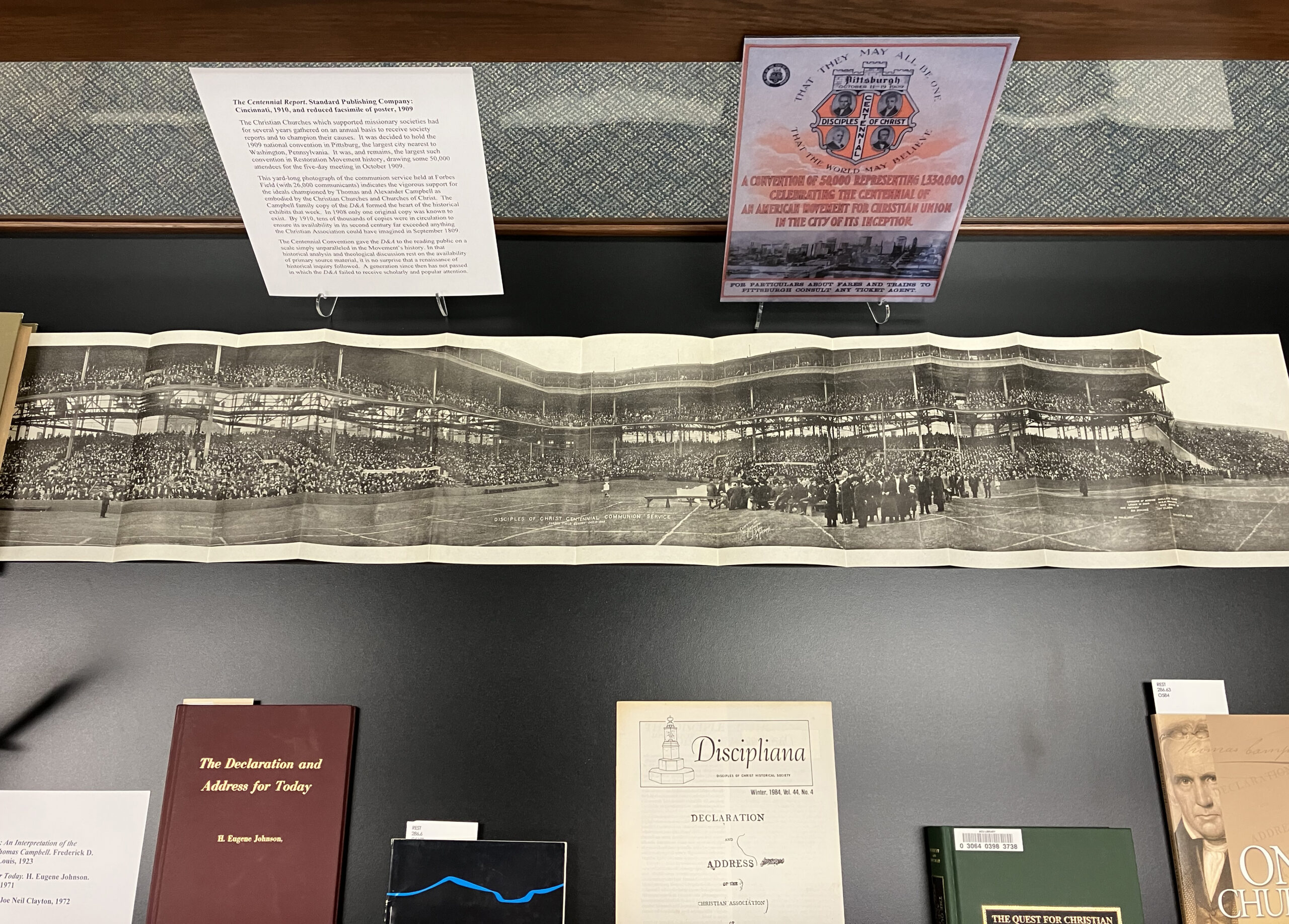
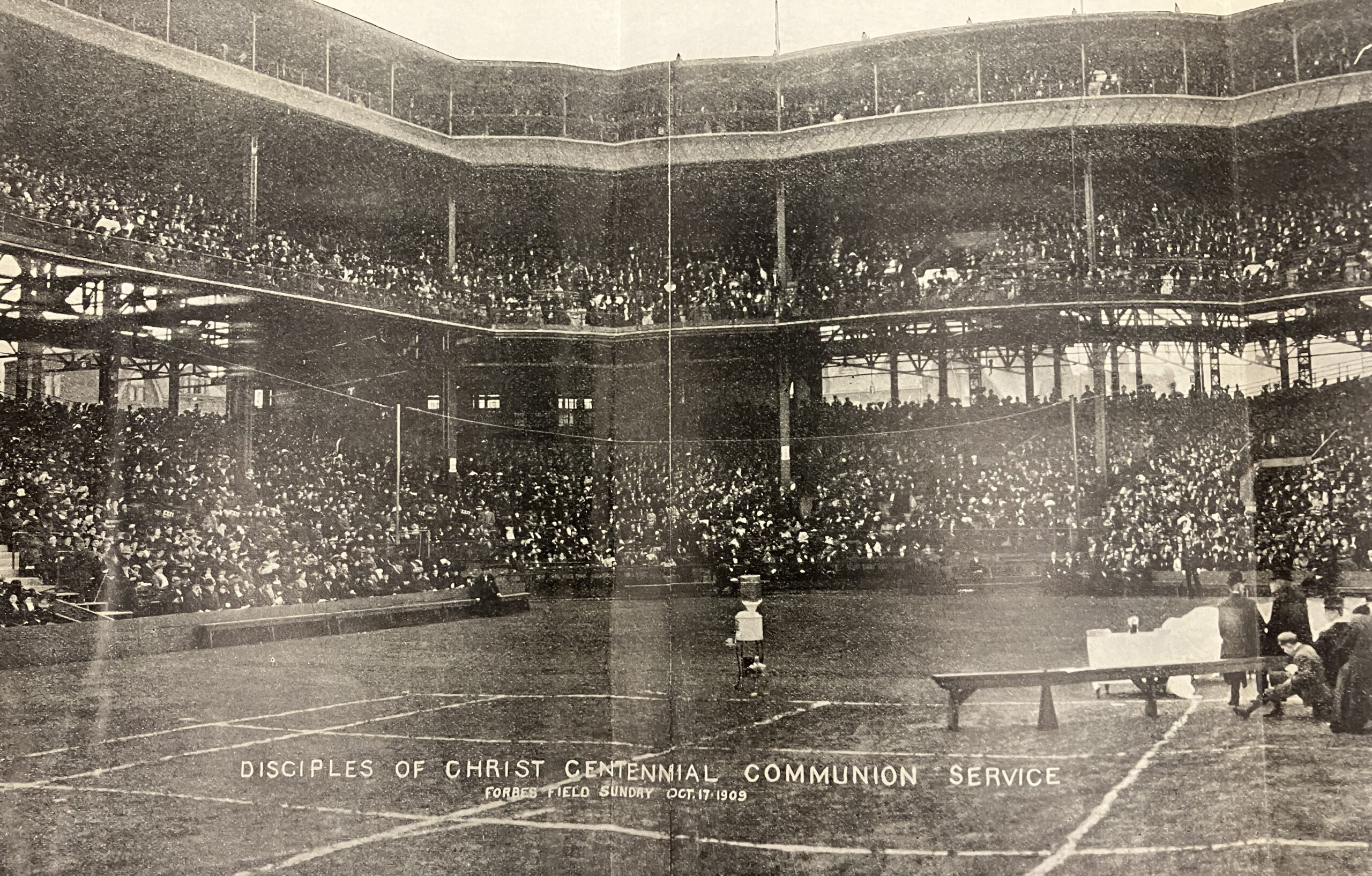
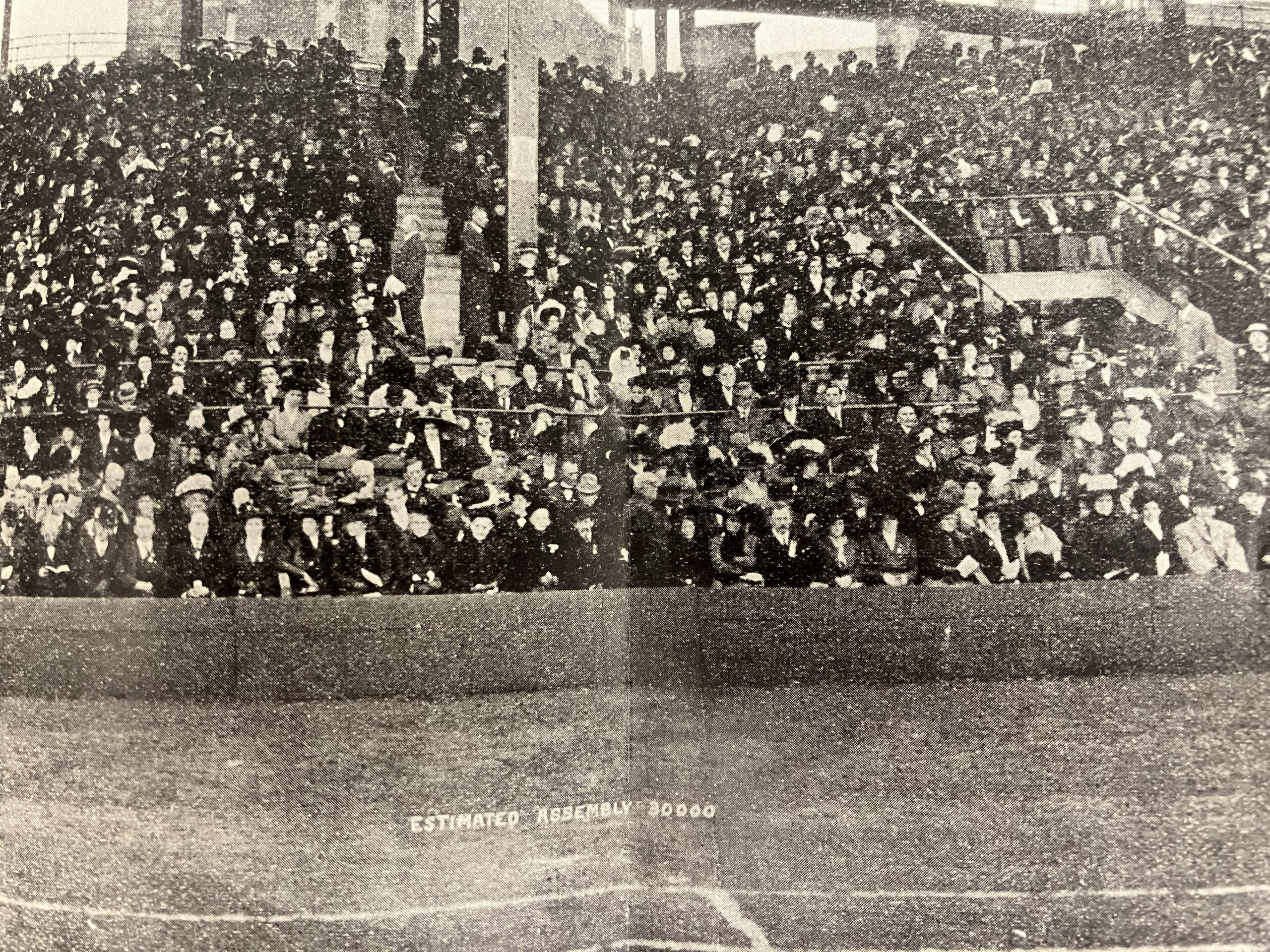
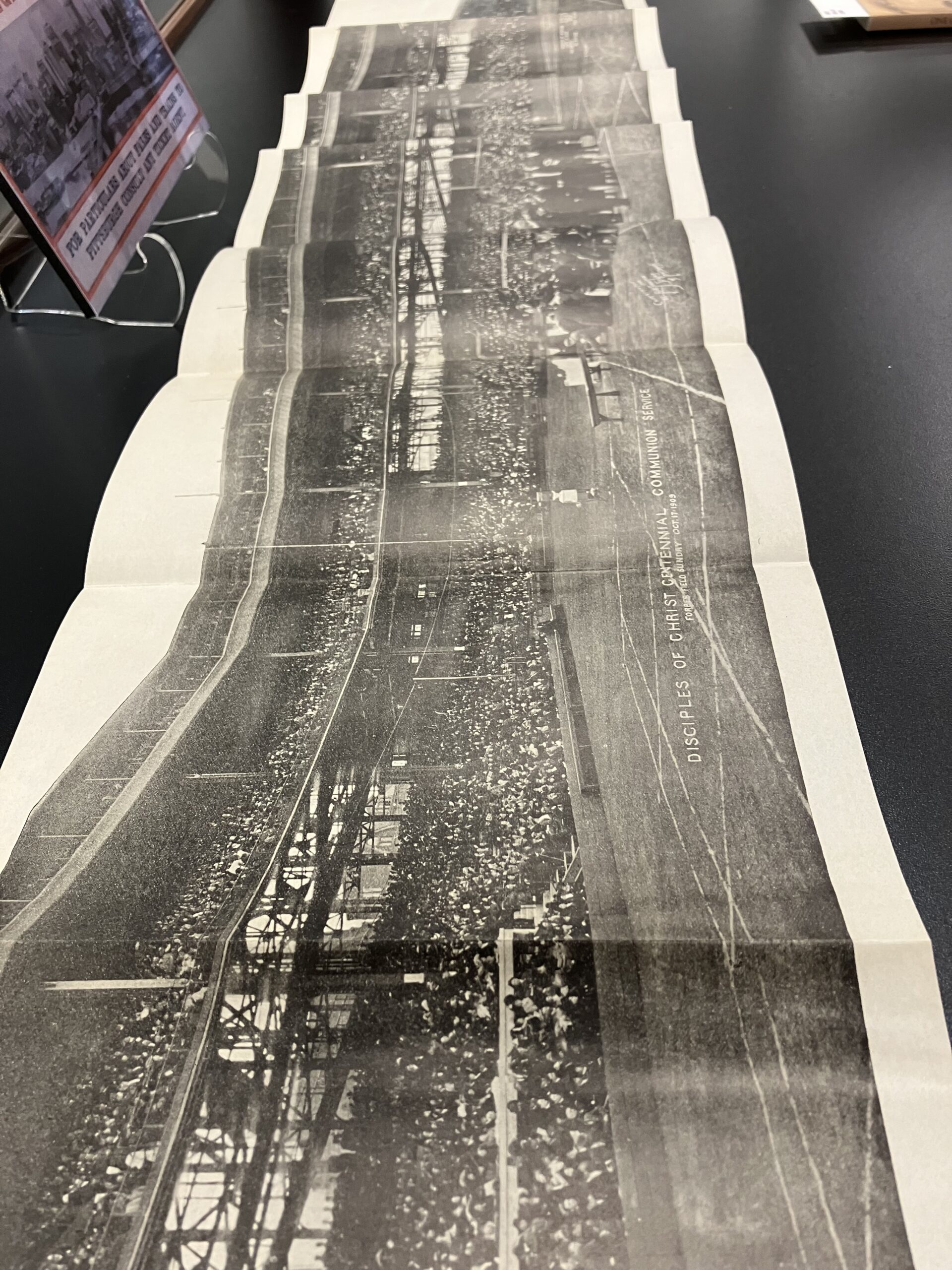
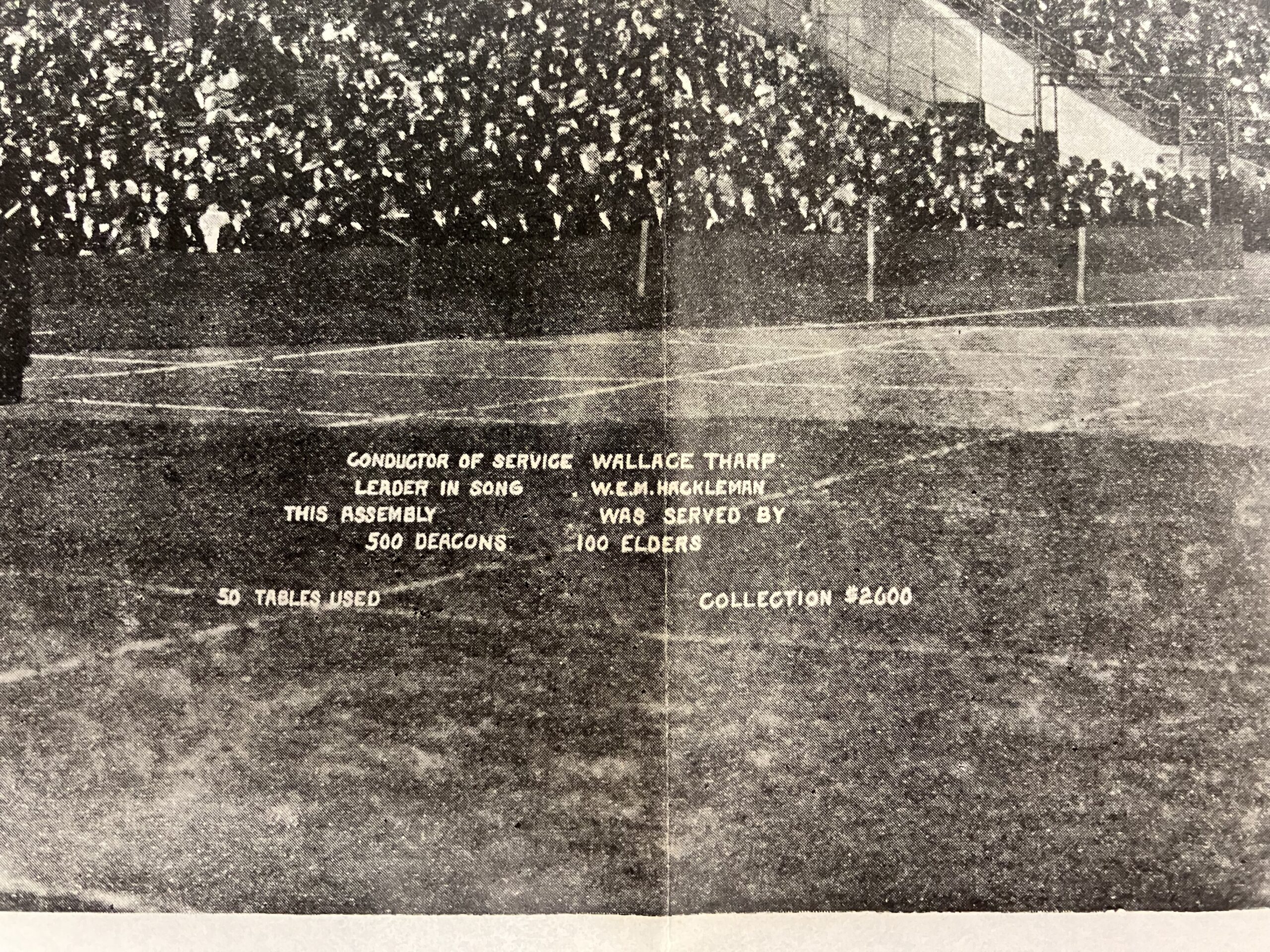
The Centennial Convention gave the D&A to the reading public on a scale simply unparalleled in the Movement’s history. In that historical analysis and theological discussion rest on the availability of primary source material, it is no surprise that a renaissance of historical inquiry followed. A generation since then has not passed in which the D&A failed to receive scholarly and popular attention. The literary legacy of the D&A, as the selection below demonstrates, has endured into its third century among all streams of the Restoration Movement, from the non-institutional Churches of Christ, to the Christian Churches and Churches of Christ, to the Christian Church (Disciples of Christ).
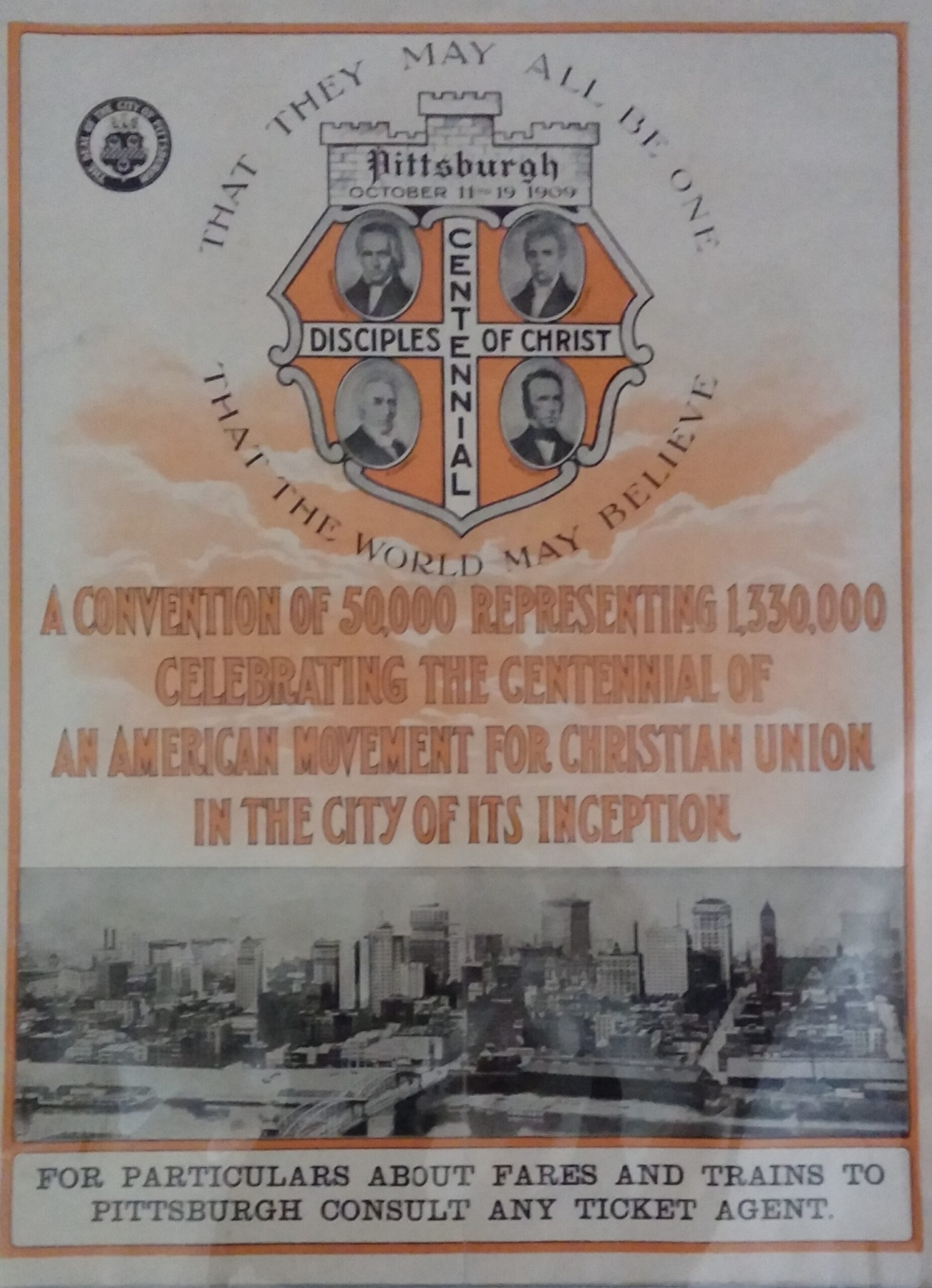
The Christian Union Overture: An Interpretation of the Declaration and Address of Thomas Campbell. Frederick D. Kershner. Bethany Press: St. Louis, 1923.
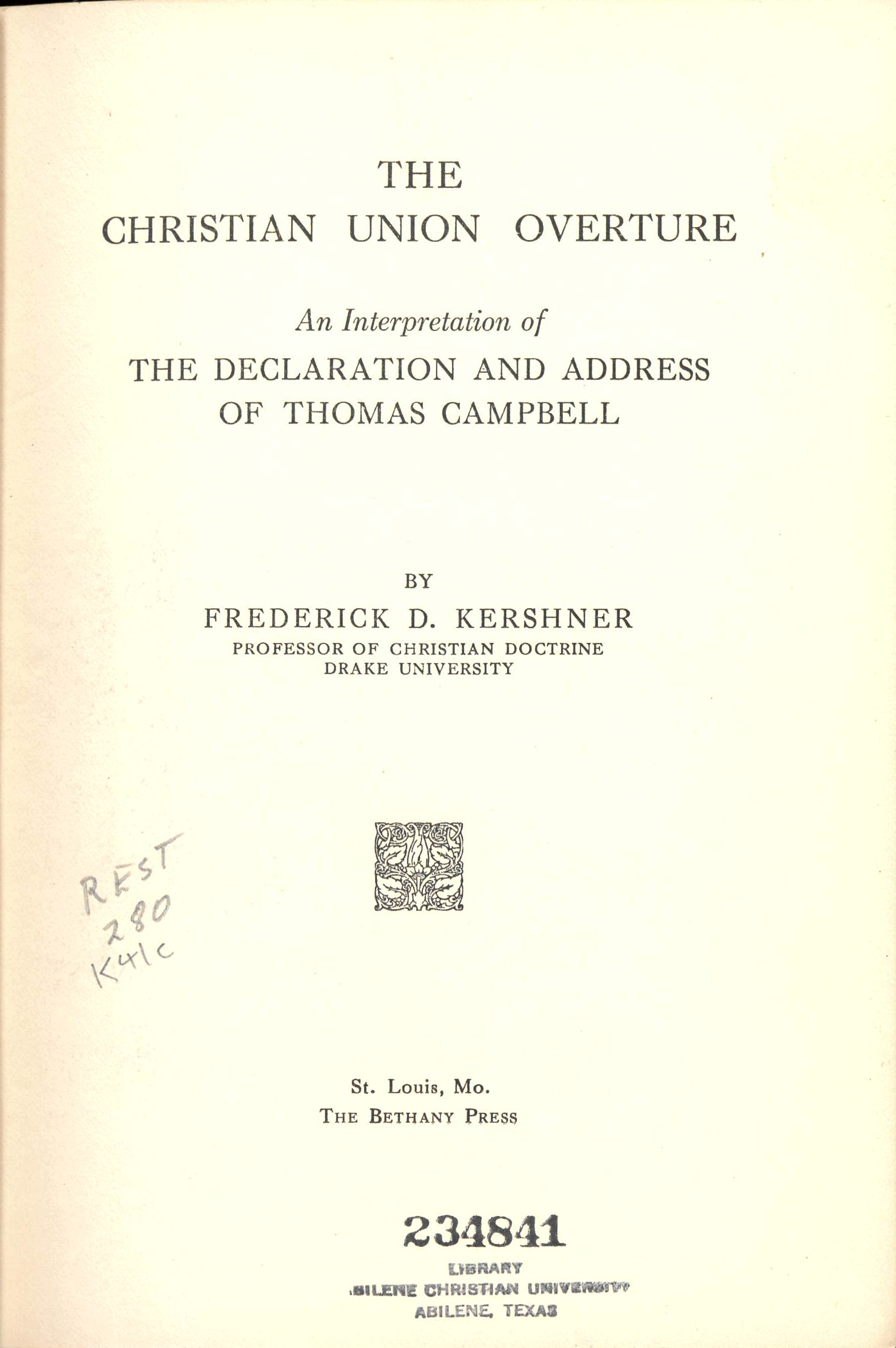
The Declaration and Address for Today. H. Eugene Johnson. Reed and Company: Nashville, 1971.
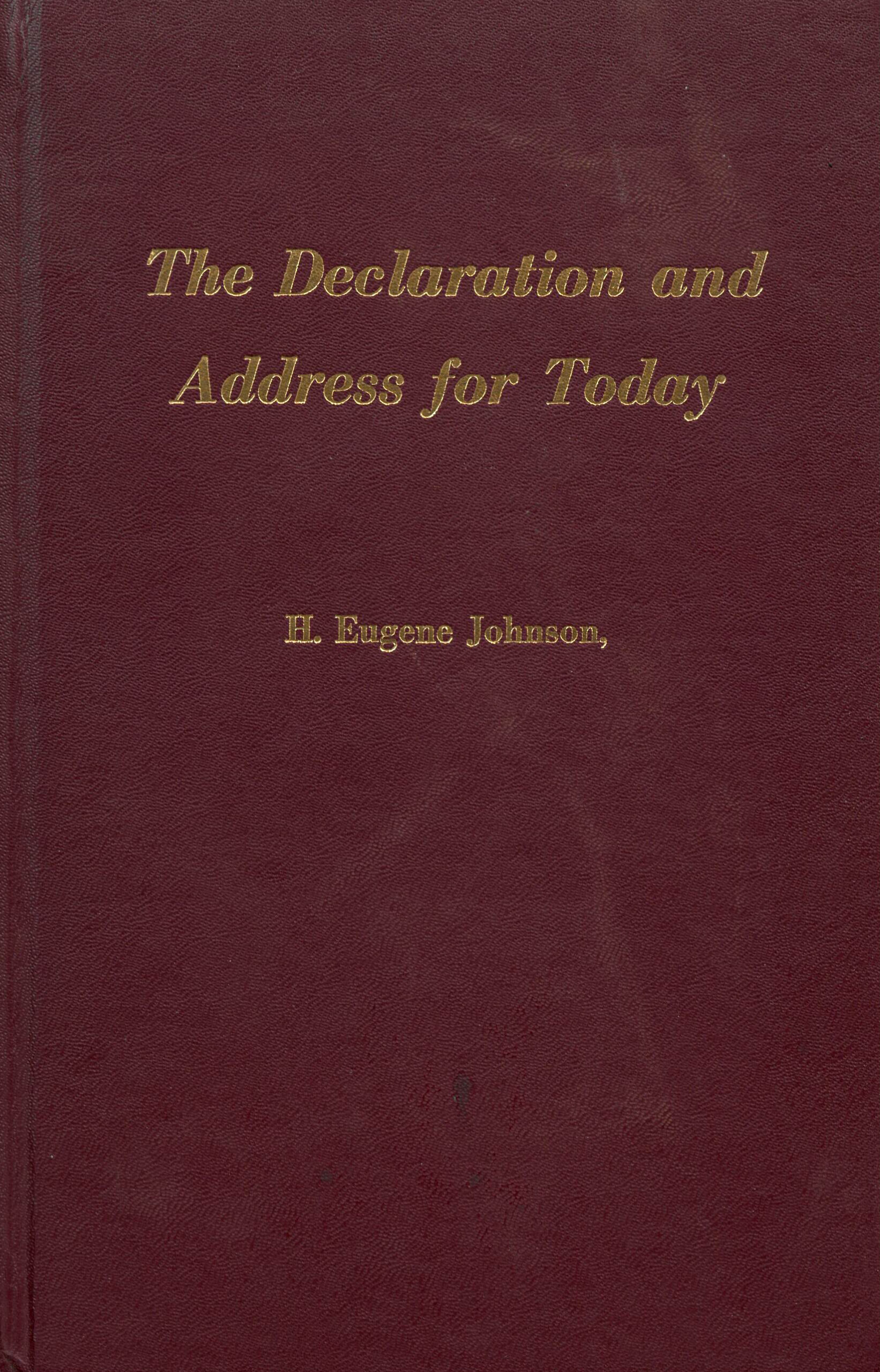
The Thunderous Silence of God. Joe Neil Clayton, 1972.
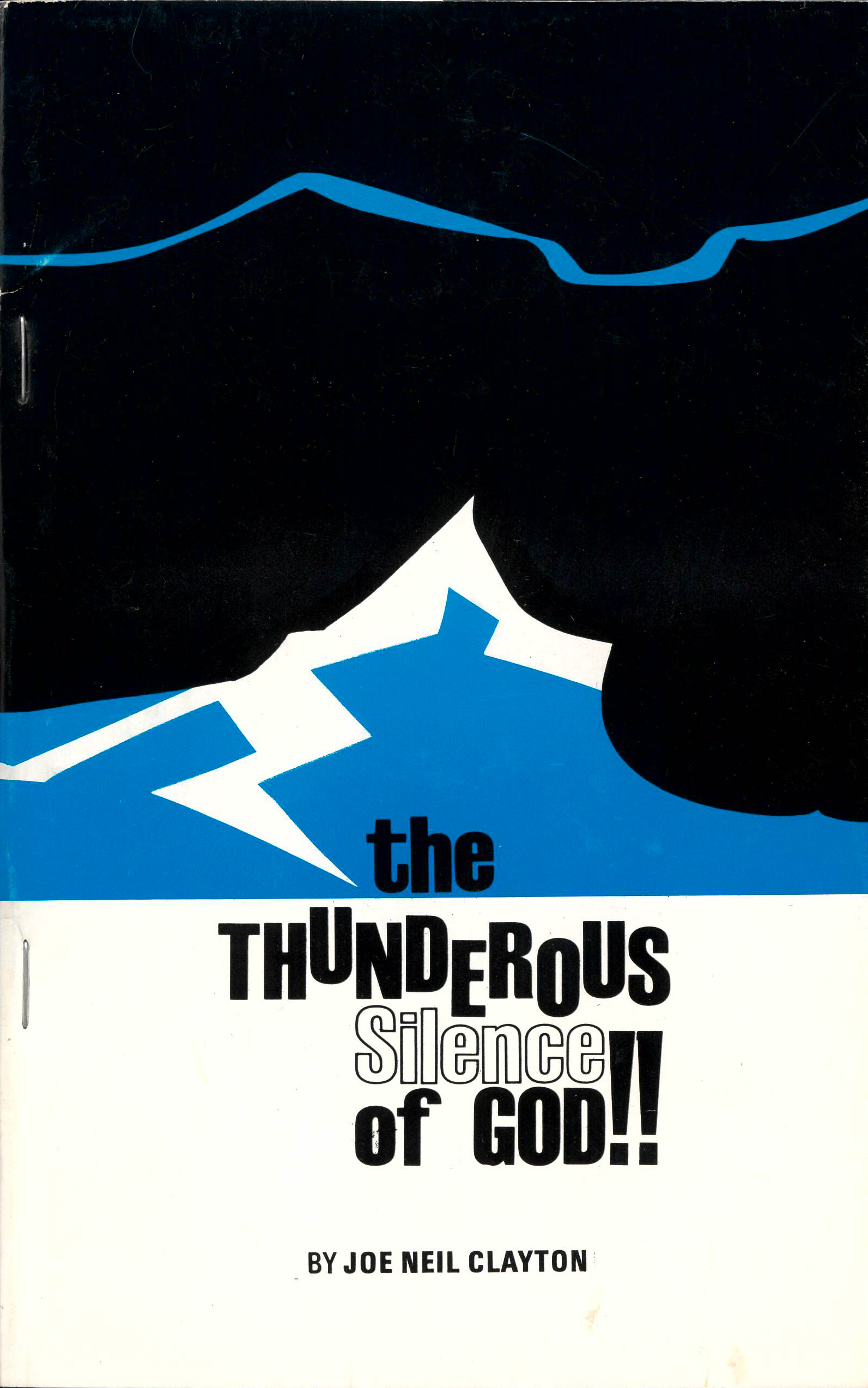
Discipliana, Winter 1984 issue.
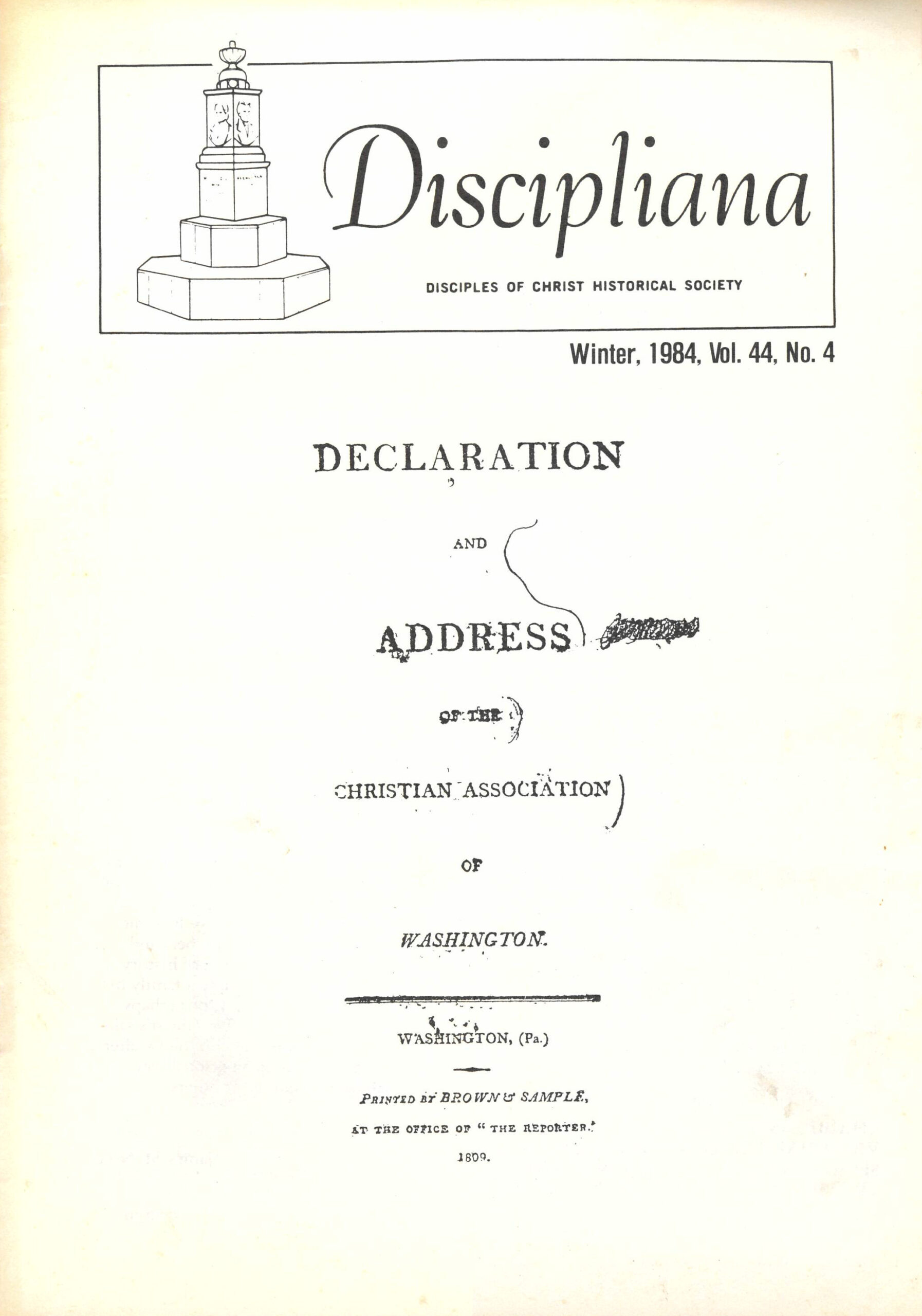
The Quest for Christian Unity, Peace and Purity in Thomas Campbell’s Declaration and Address: Text and Studies. Thomas H. Olbricht and Hans Rollman, eds. Scarecrow Press, Lanham, Maryland and London, 2000.
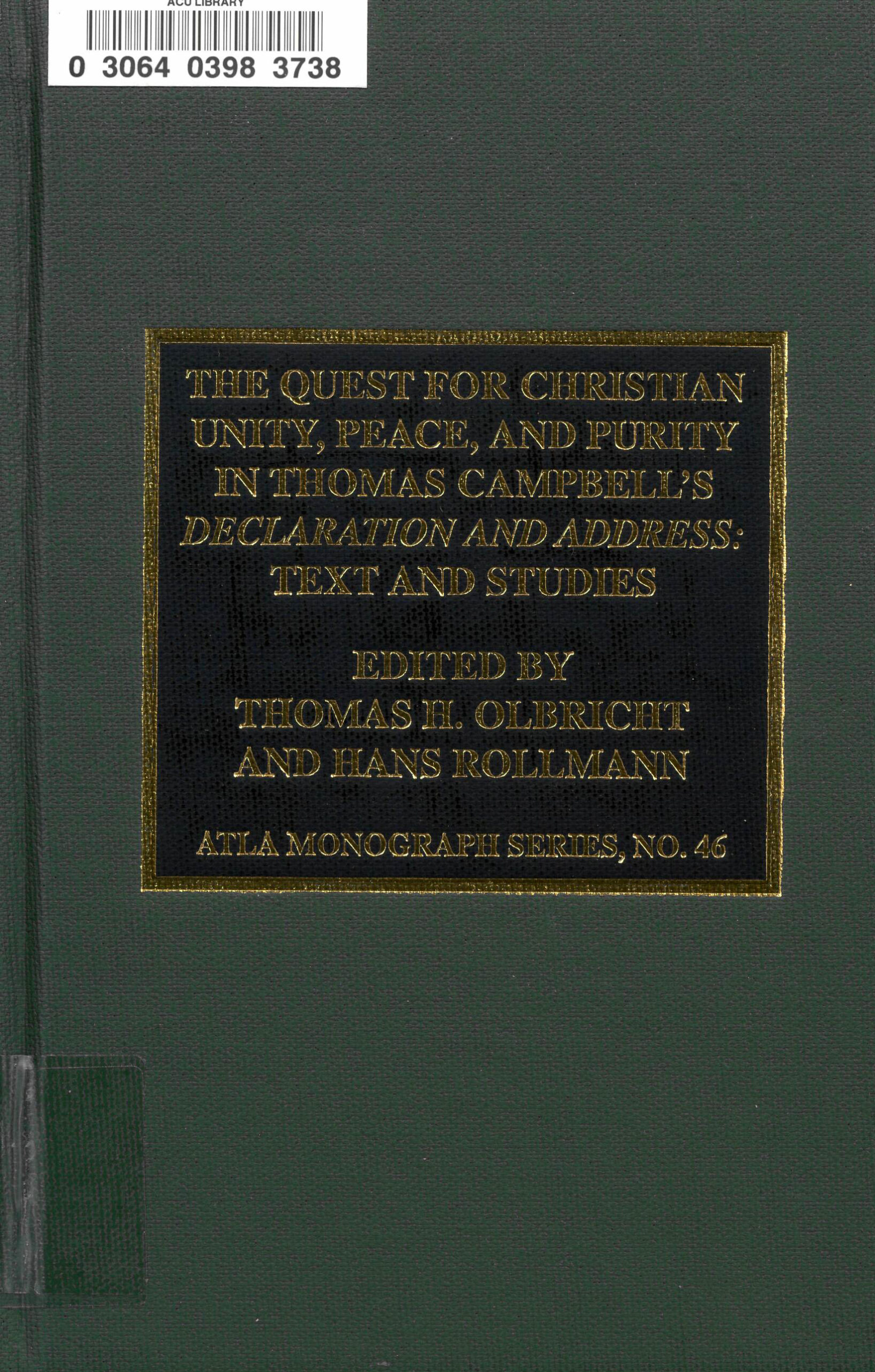
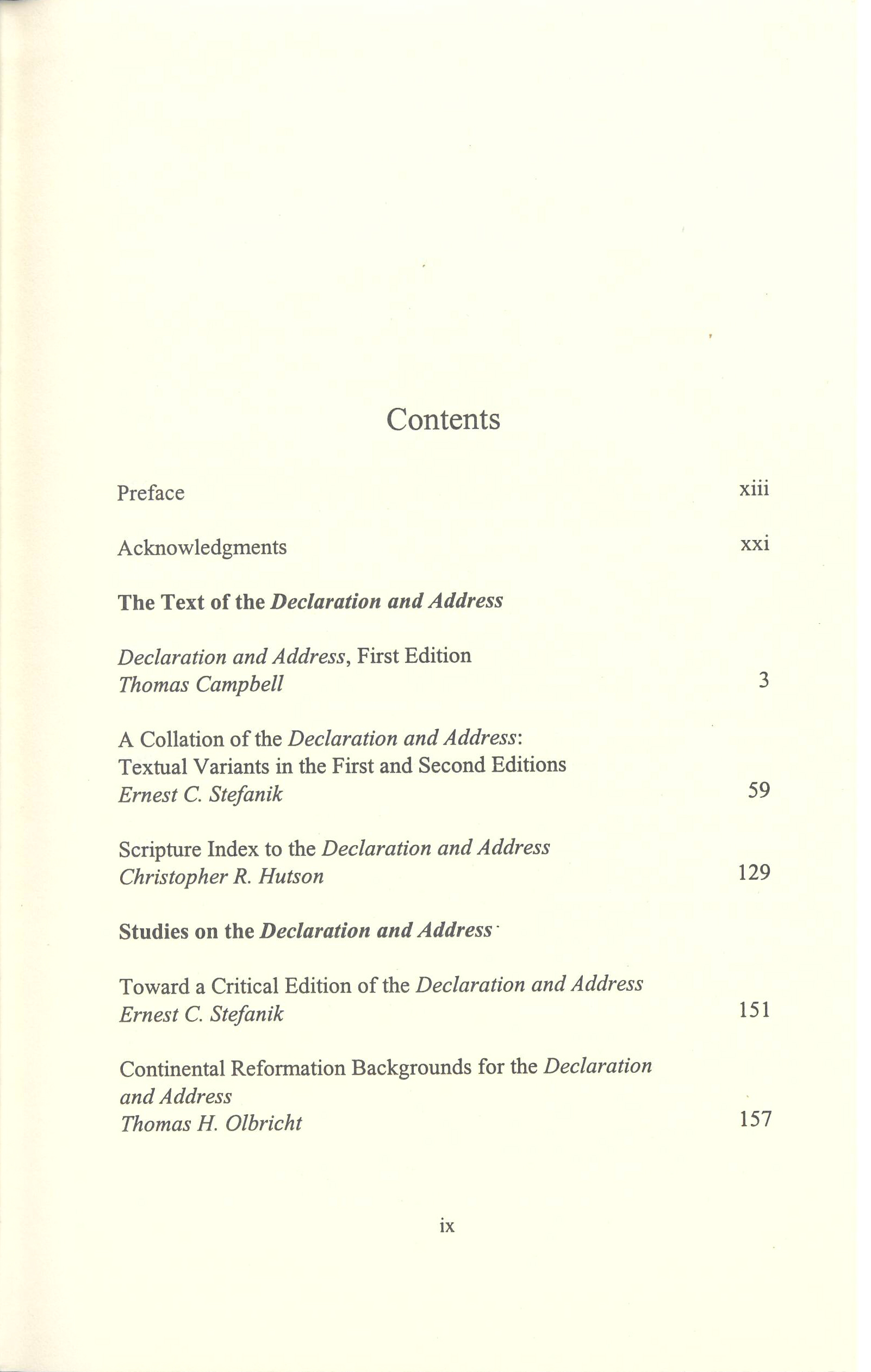
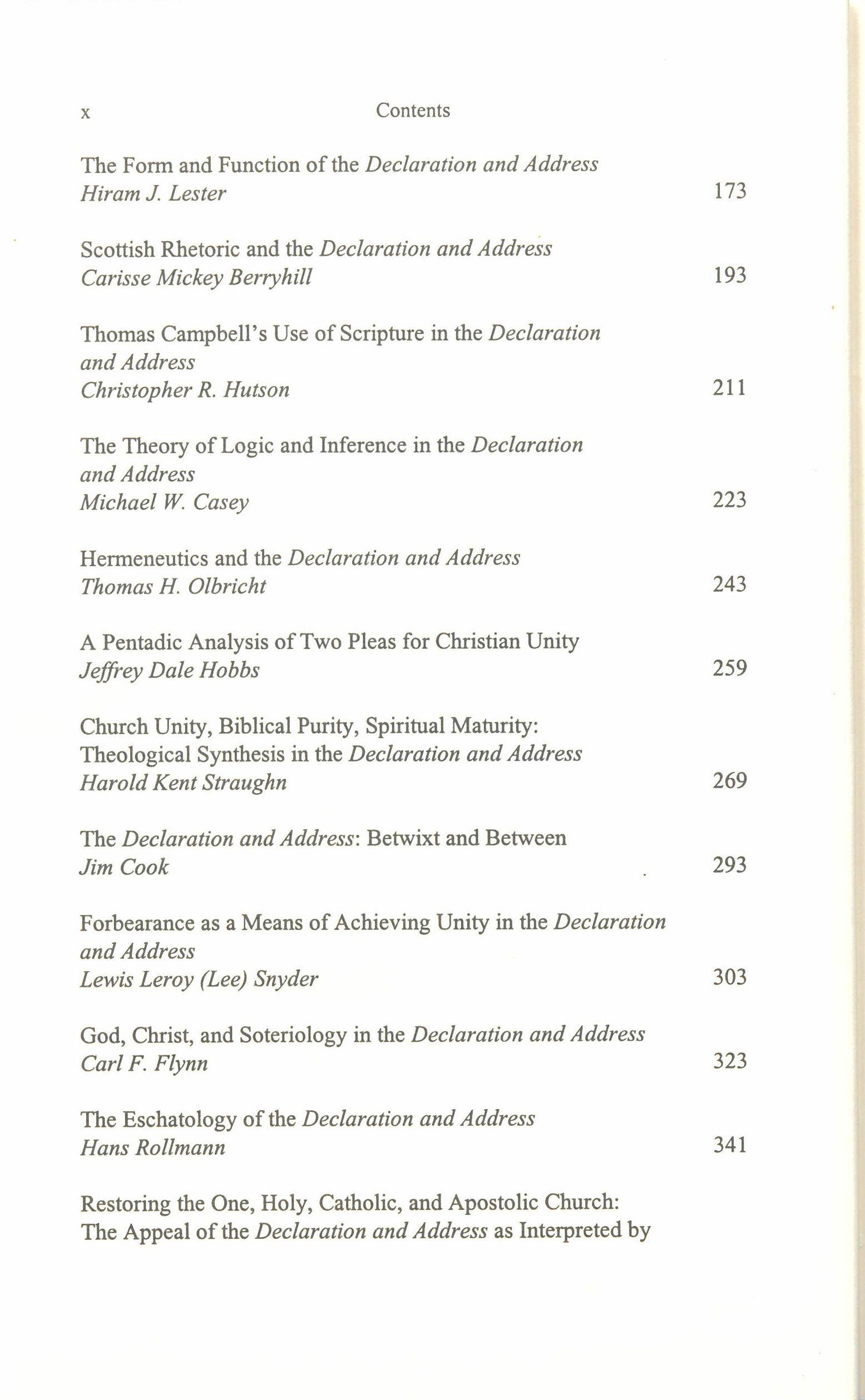
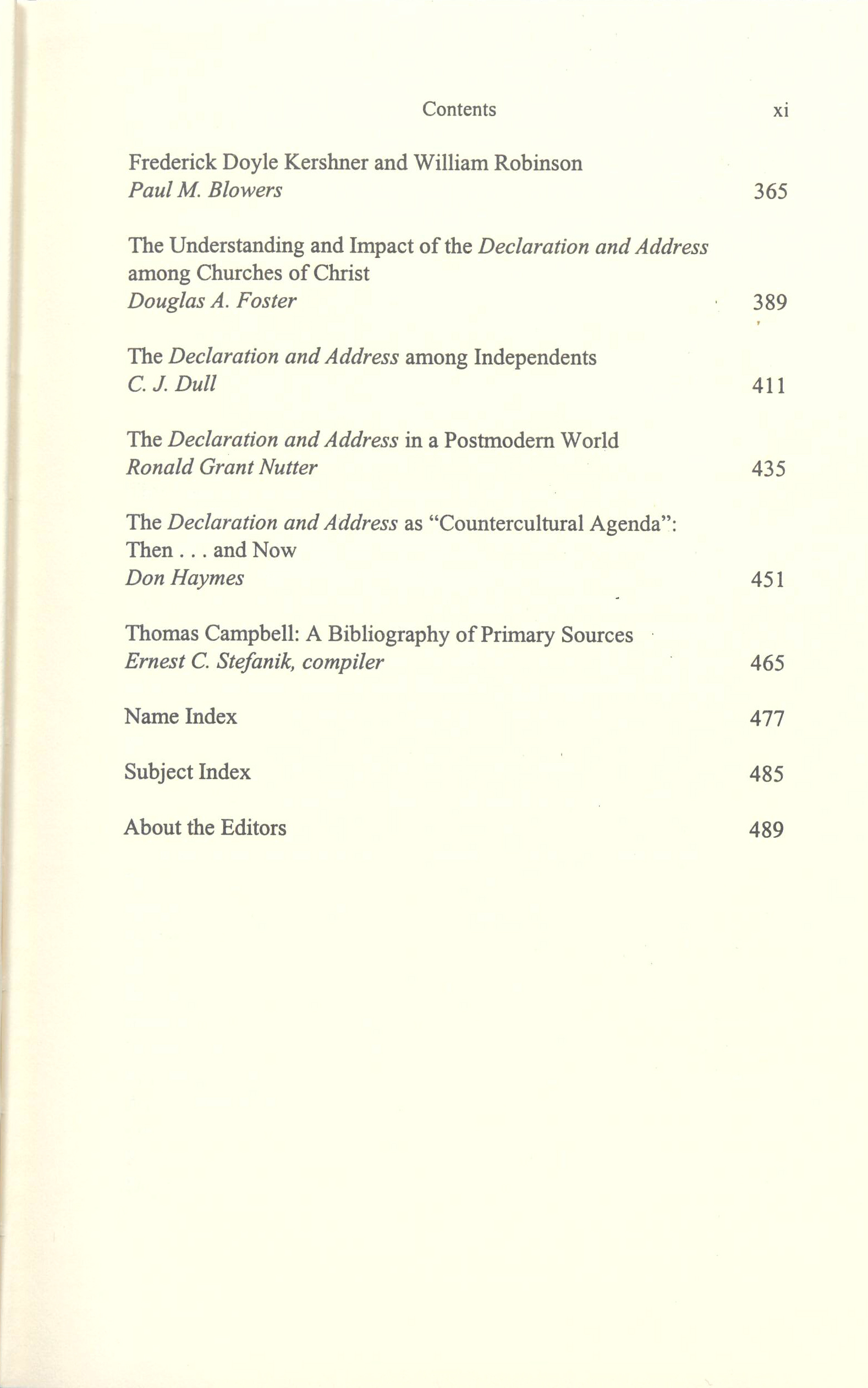
One Church, A Bicentennial Celebration of Thomas Campbell’ Declaration and Address. Glenn Thomas Carson, Douglas A. Foster and Clinton J. Holloway, eds. Leafwood Publishers: Abilene, 2009.
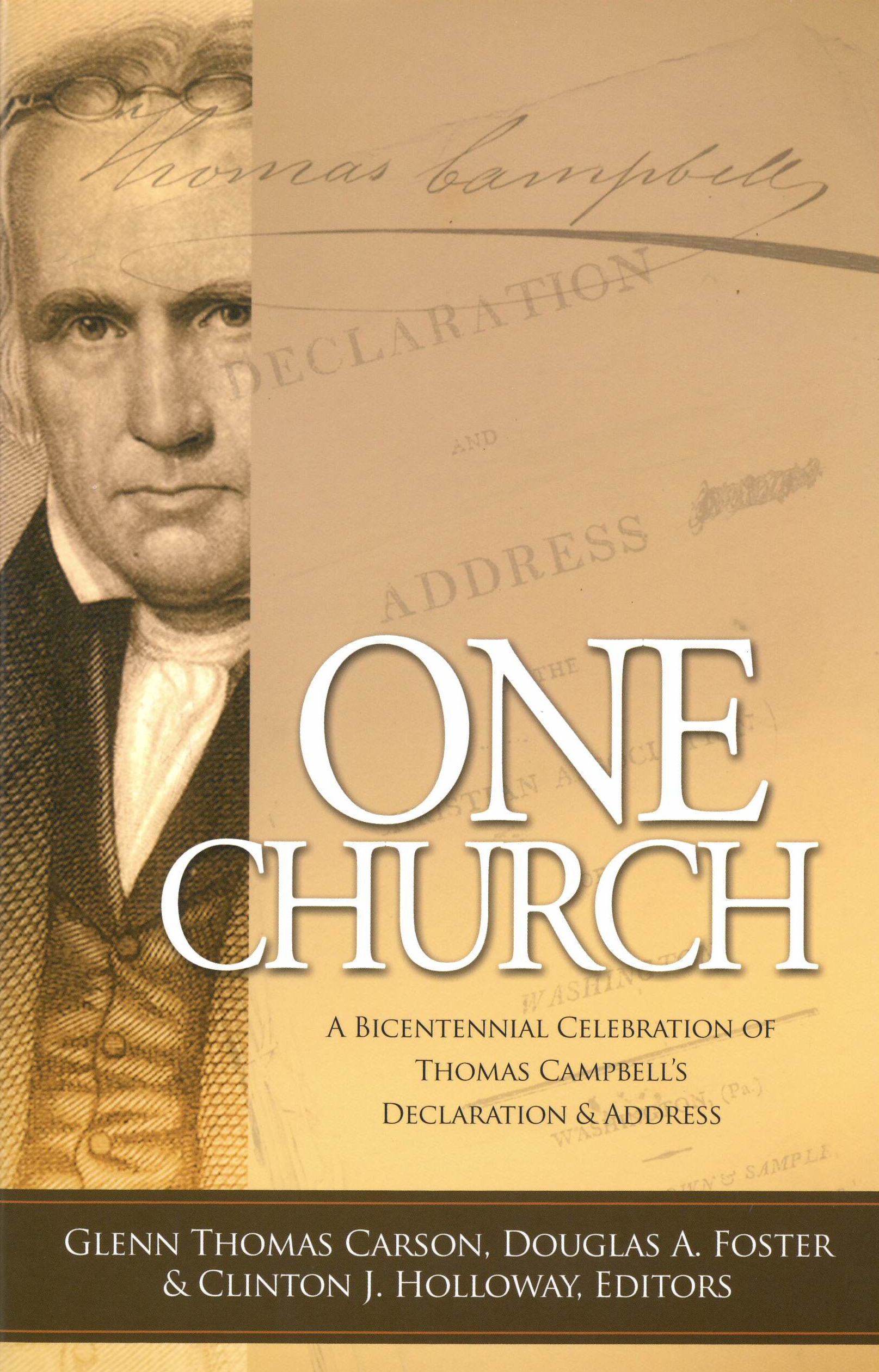
2009 Yearbook and Directory of the Christian Church (Disciples of Christ).
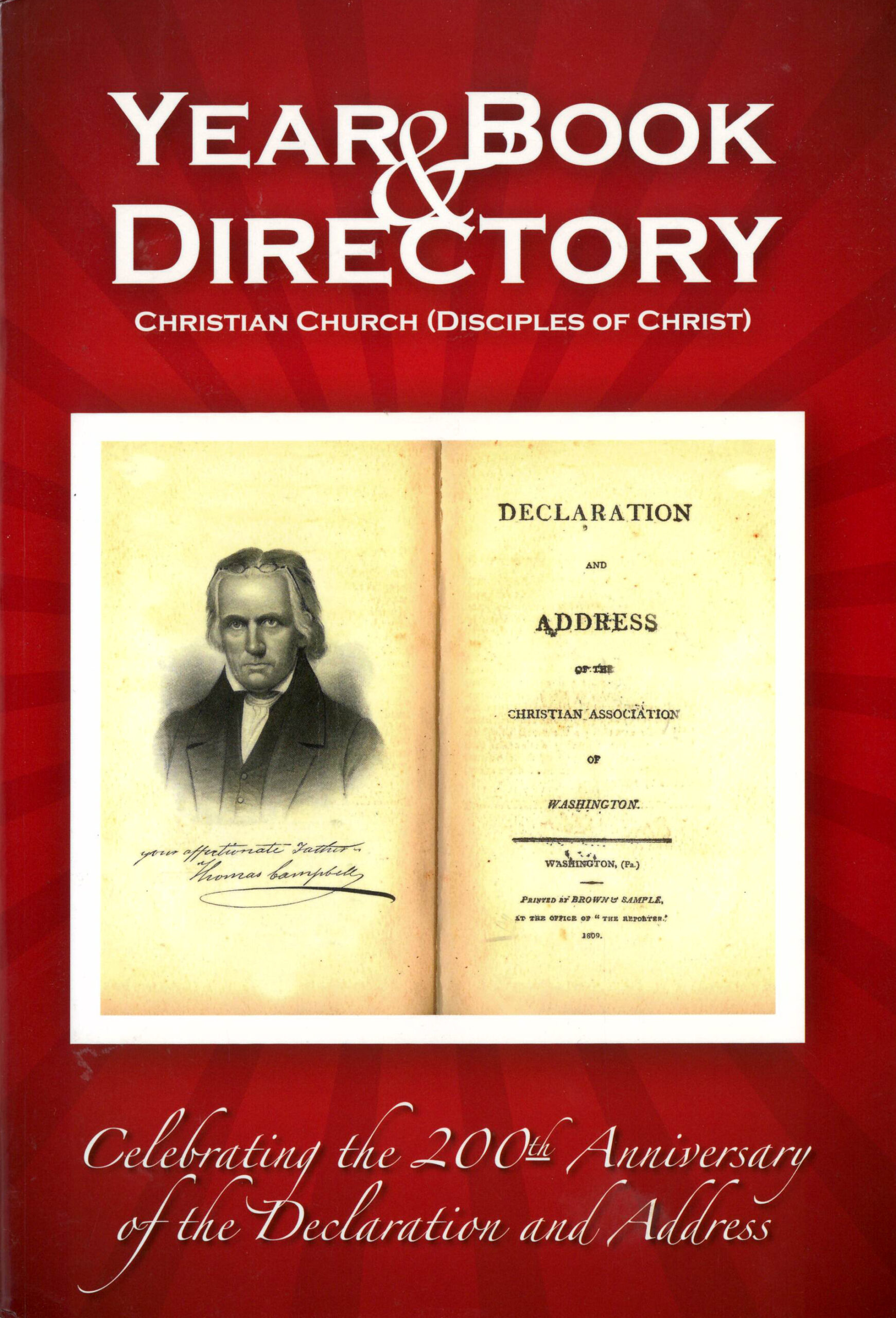
Christian History issue 106, summer 2013.
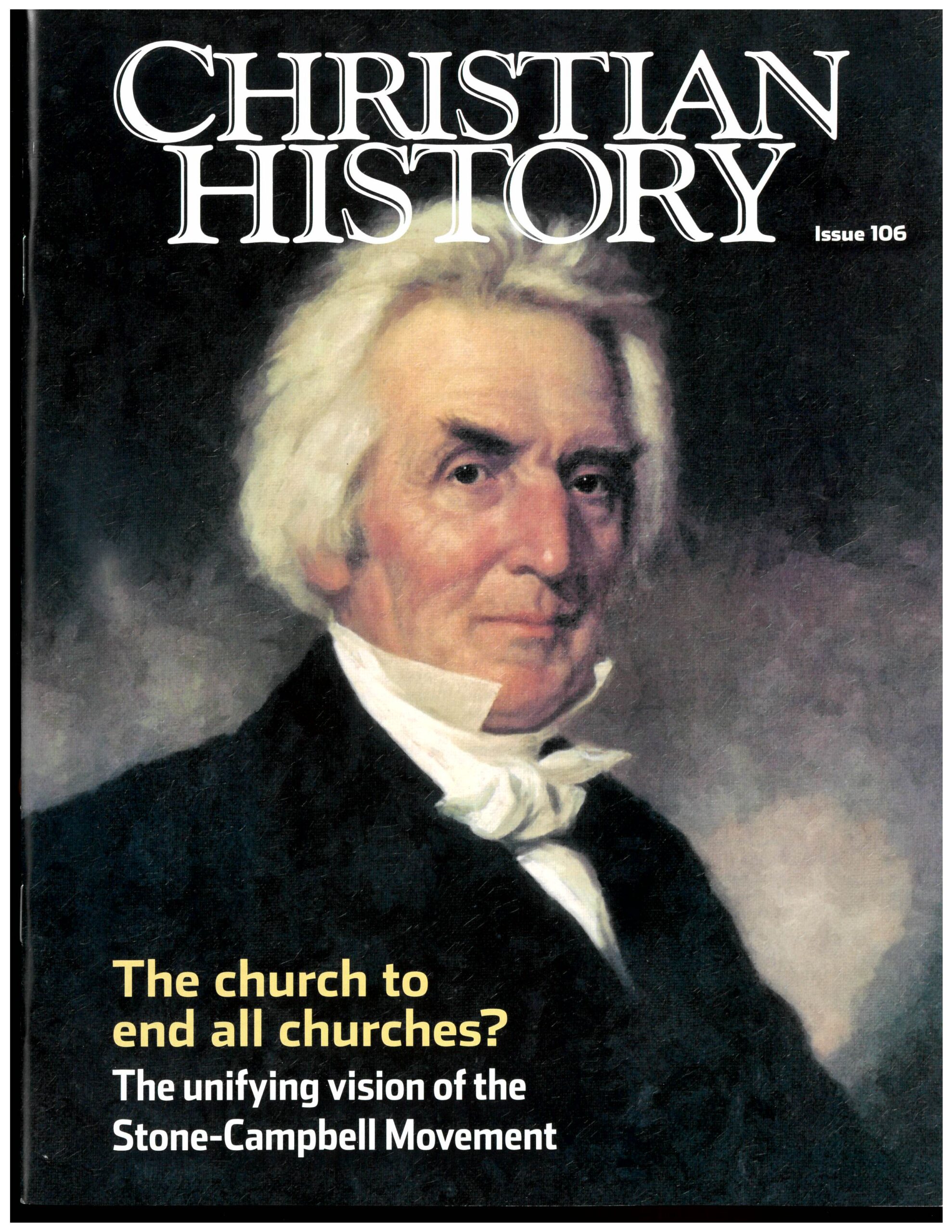
For further study:
Thomas Campbell, Declaration and Address of the Christian Association of Washington, 1809 first printing:
https://digitalcommons.acu.edu/crs_books/617
Primary source material by and about Thomas Campbell: https://web.archive.org/web/20071103112058/http://www.mun.ca/rels/restmov/people/tcampbell.html
Alexander Campbell, Memoir of Elder Thomas Campbell, 1861: https://archive.org/details/memoirsofelderth00campiala
1909 Centennial Convention Report: http://www.mun.ca/rels/restmov/texts/wwarren/ccr/CCR00A.HTM
1909 Centennial Program: https://digitalcommons.acu.edu/crs_books/118/
2009 Great Communion recordings on DC@ACU:
Doug Foster, Three Decisive Dates for Churches of Christ – The Pivotal Events of 1809, 1909, and 2009, 2008 ACU Bible Lectures.
Doug Foster, The Great Communion of 2009: History and Significance, 2009 ACU Bible Lectures.
Christian History issue 106: https://christianhistoryinstitute.org/magazine/issue/church-to-end-all-churches
John Allen Chalk, “God’s Ecumenical Plan, No.1” Herald of Truth Radio Broadcast #755, July 17, 1966: https://digitalcommons.acu.edu/hot_docs/15/
Jay Smith, “Notes on Thomas Campbell’s Declaration and Address,” Restoration Quarterly 5:3 (Third Quarter 1961), pages 113-118: https://digitalcommons.acu.edu/restorationquarterly/vol5/iss3/1/
David M. Thompson, “The Irish Background to Thomas Campbell’s Declaration and Address,” Discipliana 46:2 (Summer 1986), pages 2-25: https://digitalcommons.discipleshistory.org/discipliana/45/
Thomas H. Olbricht, “Hermeneutics in the Churches of Christ” Restoration Quarterly 37:1 (First Quarter 1995), pages 1-27: https://digitalcommons.acu.edu/restorationquarterly/vol37/iss1/2/
Hans Rollmann, Thomas Campbell’s Declaration and Address – The Fruits of an Internet Seminar – The History and Occasion of the Declaration and Address , 2001 ACU Bible Lectures.
Hans Rollmann, Thomas Campbell’s Declaration and Address – The Fruits of an Internet Seminar – The 19th-Century Message of the Declaration and Address, 2001 ACU Bible Lectures.
Hans Rollmann, Thomas Campbell’s Declaration and Address – The Fruits of an Internet Seminar – The Influence and Significance of the Declaration and Address, 2001 ACU Bible Lectures.
Hans Rollmann and Thomas H. Olbricht, A 200 Year Celebration: Thomas Campbell in Pennsylvania: Form, Function, and Intent of the 1809 Declaration and Address, 2009 ACU Bible Lectures.
Hans Rollmann and Thomas H. Olbricht, A 200 Year Celebration: The Declaration and Address as an Evangelistic Action Place for the End Times, 2009 ACU Bible Lectures.
William Baker, Agree to Disagree and Agree to Agree: Thomas Campbell’s Prescription for Unity Today, 2010 ACU Bible Lectures.
This exhibition (both analog and digital versions) was curated by Mac Ice and was installed in the Special Collections display area in September, 2022.
